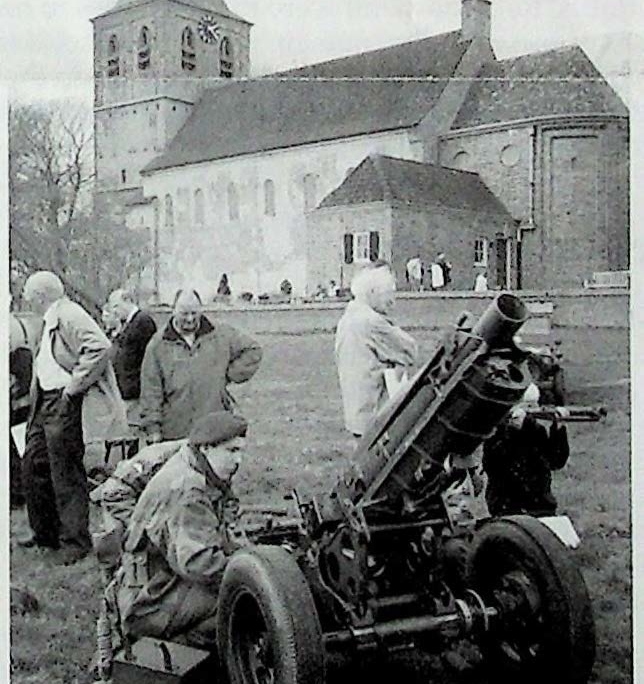The appearance of this, the 100th Newsletter from the Society of Friends of the Airborne Museum, clearly shows the important niche our quarterly magazine occupies for the members. One could almost say that our little ‘newssheet’ has actually become the heart of the society. Since the first number appeared in November 1980, then on a simple A4 page, it has grown into the his torical military magazine that we see today, com plete with the by now renowned Ministory. The ini tial Dutch-language-only Newsletter was soon fol lowed by an English-language edition for our mem bers in the UK, and the (nowadays) 15 other coun tries where society members are to be found. In the first Newsletter Robert Voskuil wrote that its aim was ‘to keep you, the members, up to date with the ups and downs of our Society and, of course, of the Airborne Museum’, and that aim has been abun dantly fulfilled over the last 25 years. The question now is whether or not we continue in this direction at a time when news gathering anddissemination occurs quicker than ever before. The board feels that the provision of news to the soci ety’s members could be different, more up-to-the- minute and, above all, quicker. At present we are looking into other forms, in which of course the internet will fill an important slot. But the Newsletter’s continued existence is assured, certainly where the historical side of the Battle of Arnhem and all that that entails are concerned. The initiative of Chris van Roekel in particular, who at that time wished to see more battle-factual depth in the Newsletter, has become an institution in its own right, by which I mean the Ministory. Newsletter number 10 of May 1983 was accompanied by the first Ministory, written by Chris himself, which con tained the background story of the British carrier pigeons during the Battle. The Ministory has now become an almost scientific article complete with footnotes. Chris can be justifiably satisfied, because his idea of generating more interaction with the members still thrives. It is still the members who take the time and trouble to write these brilliantly documented ministories.
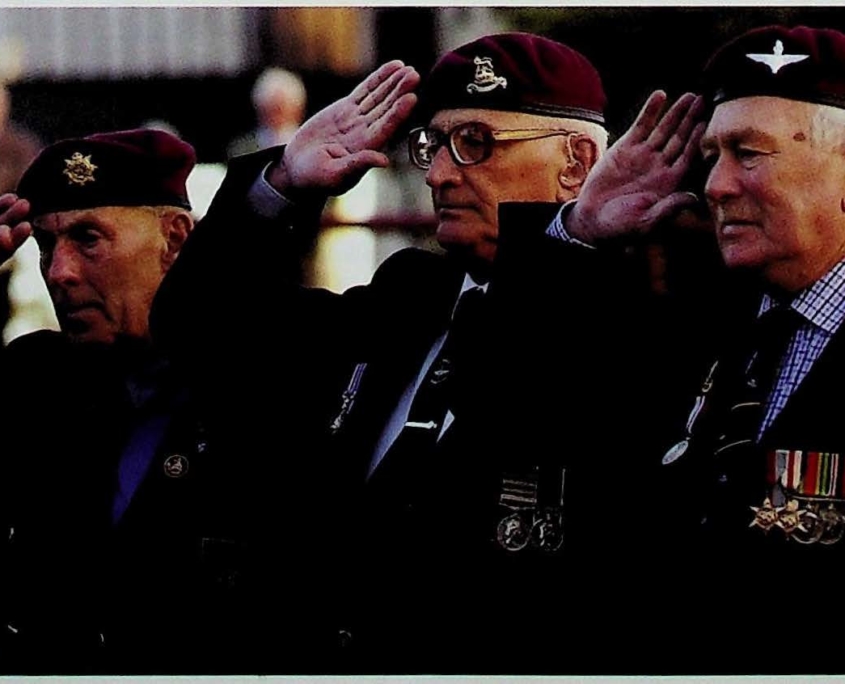
A lookback at the 61st commemoration of the Battle of Arnhem: three veterans at the ’Airborne Square’ in Arnhem on 16 September 2005. Right, Jim Flauell, who fought at the Rhine bridge in Arnhem.
Now that the hundredth edition of the Newsletter has arrived, it just remains for me to offer a word of thanks to all those who, with text and photos, or as volunteers, have helped in its production and distri-bution over the past quarter of a century, and have thereby contributed to the success and continuity of our paper. I would like to give special thanks to Robert Voskuil and Geert Maassen for their effort and creativity. Our thanks also go to Cathrien and Peter Clark who translate the Newsletter and Ministory into English.
And one thing is certain: Airborne news will go on, and the Newsletter will continue to report it!
(Ben Kolster, chairman)
From the editors
In this 100th edition of the Newsletter we of course reflect on the 61st commemoration of the Battle of Arnhem. The number is slightly different than that to which you are accustomed. It contains more pages and is in ‘full colour’, but there is no separate Ministory this time. We chose instead to include two extra-long articles in the Newsletter itself.
Wybo Boersma’s farewell
On 23 September Wybo Boersma retired from his position as director of the Airborne Museum. We marked the occasion in the afternoon of that day by organising a special study programme in the coach house of Huize ‘De Pietersberg’ in Oosterbeek. Four directors from military museums in the Netherlands, Belgium, England and Germany were on hand to give their views on the setting up of a modern exhibition relative to the (changed) demands of the public. This was followed by a reception in the Airborne Museum, where many friends and acquaintances came to thank the departing director personally for all he has done for the museum since 1972. Wybo will continue as a board member of the Airborne Museum Foundation.
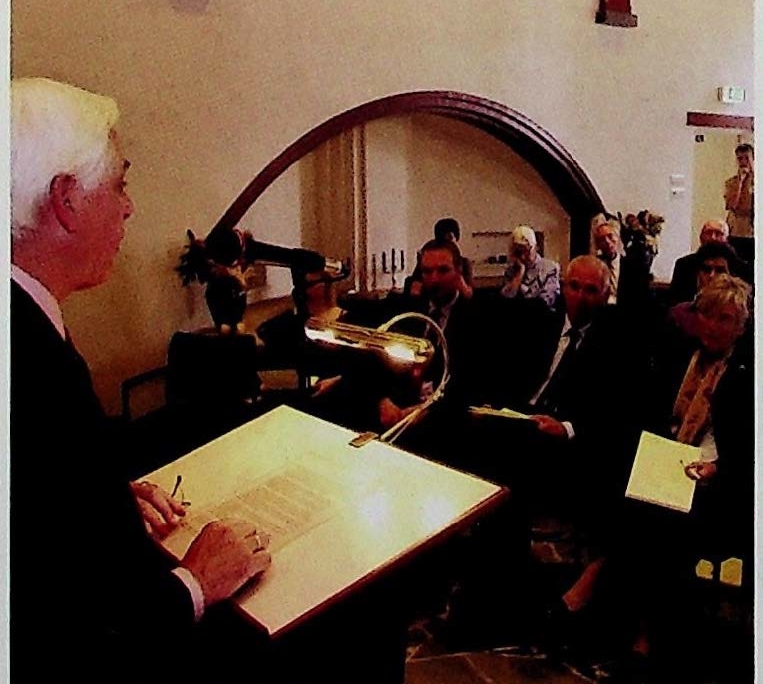
During the symposium held in De Pietersberg in Oosterbeek on the occasion of Wybo Boersma’s farewell on 23 September 2005, acting chairman of the museum board Mr. J. van Slooten thanks Wybo for all the work he has done for the museum since 1972.
Changes in the Foundation s board of management
As of 1 October, Mr J. van Slooten from Oosterbeek resigned from the board as acting chairman of the Airborne Museum Foundation. Mr. Van Slooten came to the conclusion that the museum could be best served by his making way on the board for ‘new blood’. As he himself put it: ‘For the leap into the future the museum needs younger legs than mine’. Mr W.J.M. Duyts, secretary of the Airborne Museum Foundation, has taken over the function of interim chairman. Meanwhile, one of the vacancies on the foundation board has been filled by Mr R.P. Kaarsemaker from Schaarsbergen (Arnhem). Mr Kaarsemaker is an accountant.
AGM 2006
The Society of Friends of the Airborne Museum’s AGM will be held on Saturday 8 April 2006. Location and programme details will be given in the next Newsletter.
News from Niall
We have received the following message from Niall Cherry which nicely rounds off the special weekend that was organised for UK members last June.
‘I would like to thank the organisers and members who took part in the special weekend, and express the hope that everyone enjoyed him-/herself. After returning to the UK I received an e-mail from one of the participants who gave the weekend a ‘satisfac¬tion mark’ of 11 on a scale of 1 to 10!! The weather was beautiful, and almost everything went accord¬ing to plan. The only minor problem was caused by the few closed roads we encountered on our trip to the Groesbeek area. I found it a fantastic weekend and, as on previous occasions, I learned a lot.
I hope we shall be able to organise a similar excur¬sion in 2007. I already have eight bookings for such a trip!
I would also like to thank everyone who sat down to dine on Sunday evening at the ‘Captain’s Table’ in the Schoonoord restaurant. It was a fitting finale to a memorable weekend. The UK representative even rendered a number of members speechless when, after allowing his wallet one of its rare visits to the outside world, he offered to buy a round of drinks! Members interested in the provisional 2007 week¬end excursion are welcome to contact me*.
(Niall Cherry)
Ted Shaw’s ashes interred
Arnhem veteran Edward Ernest (Ted) Shaw passed away at his home in Newton Abbot on 21 July 2005. He was 86 years of age.
In September 1944 Lieutenant Shaw commanded C Troop, 1st Airlanding Anti-Tank Battery, Royal Artillery. He was later awarded the Military Cross for his bravery during the Battle of Arnhem. He was a regular visitor to Oosterbeek after the war where, on most occasions, he was the guest of the Fennema family in Benedendorpsweg. For many years Ted represented the SFAM in the UK, and liaised between the veterans in England and the commemoration organisations in the Netherlands. But he was better known for the fact that, for a number of years, he and two schoolchildren placed flowers at the foot of the ‘Cross of Sacrifice’ in the Airborne Cemetery at the completion of the official wreath¬laying ceremony.
His ashes were laid to rest in the Airborne Cemetery on 16 September 2005 in the presence of a large number of people. The Reverend R.A.W. Boyce led the service. The small casket containing his ashes was buried in one of the pathways, immediately behind the headstone of Sergeant T.B. Rae, 7th Battalion The King’s Own Scottish Borderers. A wreath was also laid on behalf of the Friends’ Society.
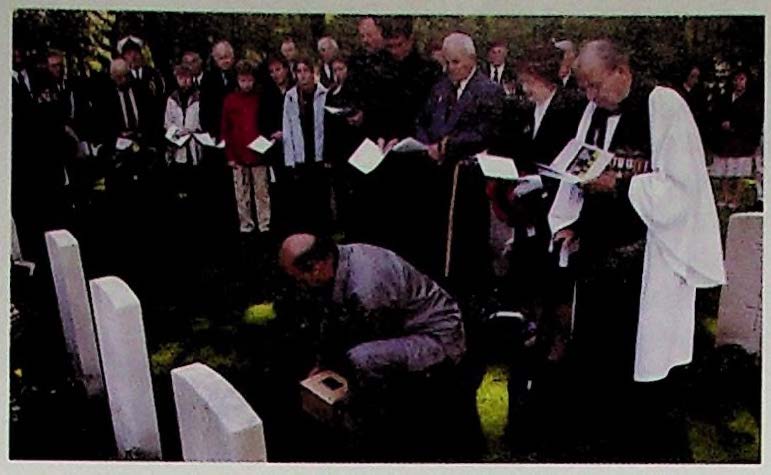
16 September 2005. Ted Shaw’s ashes are buried at the Airborne Cemetery, Oosterbeek.
Facelift for ‘Social Evenings’
Over the years it has become a tradition for the SFAM to organise a Social Evening in the Airborne Museum during February and/or March. The gener¬al programme was that a few members would exhibit part of their collection, and a tour would be made of the museum’s archives and restoration area under expert guidance.
On the initiative of the museum’s new director Mr Frans Smolders, the number of Social Evenings is to be increased and given a slightly different look. In 2006 it is the intention to organise several evening meetings which will be held in the upper room of the Kleyn Hartensteyn Restaurant in Oosterbeek. A guest speaker, either from within the society or out¬side, will be invited for each Social Evening. The speaker will give a talk on a specific subject related to Operation Market Garden. The subject could be the results of research, discussion of a publication with which the speaker is involved or has read, an unusual battlefield find, etc, etc. It is not intended that the entire evening should be given over to an in-depth discourse: that is the purpose of the theme afternoons. The ‘socials’ must have a Tow threshold’ character which, in principle, will encourage every¬one to dare to contribute. Afterwards, things can be discussed and information exchanged and talked about over a drink. The future aim is that the sub¬jects to be dealt with during the Social Evenings will be announced on the Airborne Museum’s website. Our former chairman Chris van Roekel will open the batting. On 25 January 2006 he will give a talk enti¬tled ‘No one holds the copyright on the past’. It will include a critical dissertation on the literature about the Second World War, and the degree to which this can have a guiding role in the updating of the Airborne Museum.
Should you be interested in giving a talk on one of the future Social Evenings, please contact our secre-tary Mr Ivar Goedings, c/o Airborne Museum or via e-mail goedings@van-lotringen.nl.
A long-cherished wish granted
One of the items the Airborne Museum has been searching for for years is a Eureka beacon. In September 1944 Eureka radio-beacons were used by the 21st Independent Parachute Company to indi¬cate the dropping and landing zones. These beacons transmitted a signal to the approaching aircraft where it was captured by the machines’ Rebecca receiving equipment. The signal was converted into a visual display which was shown on the screen of an ‘Indicating Unit Type 6E’. This enabled the pilot to identify the correct positions of the dropping and landing zones. It was also possible to transmit and receive short messages.
During the Battle of Arnhem the ‘Pathfinders’ were probably equipped with some 48 Eureka beacons, two of which were apparently lost. The Airborne Forces Museum in Aidershot has one incomplete Eureka, and there is one in the Netherlands of the type used at Arnhem, which consists of a transmit-ter-receiver and a power unit. At my farewell, and to my great surprise, I was presented with a Eureka Mk II Transmitter-Receiver TR 3174 by a Mr Van Riet from Arnhem. As the possessor of a complete unit he was aware of our wish. I handed the Eureka over to the Airborne Museum, so as well as the American Eureka, the ‘AN/PPN 1’, we now have a British ver¬sion. We are still short of a few components, but without doubt we shall come across them some¬where over the coming years.
(Wybo Boersma)

The Eureka Mk II Transmitter-Receiver TR 3174, recently obtained by the Airborne Museum.
‘General Service Medal’ for Don Jacobs
Don Jacobs is known by many as the man whose job it is to manage the Airborne Museum’s photo archives, a job he has done since 1990. It is less well- known that before then he was employed in many different jobs in several different countries across the world. Don served in the British army with the REME (Royal Electrical and Mechanical Engineers), being stationed in the Suez Canal Zone in Egypt from 1954 until 1956. He recently received the General Service Medal with the ‘Canal Zone clasp, fifty years after that particular period of his service. Don left the REME in 1960, after which he took up employment with an American oil concern, working in such places as Libya and Borneo. He then became a driver-school instructor in London, as well as sell¬ing insurance and books. He later moved to Norway where he worked as a mountain guide employed by a Youth Hostel. He returned to the UK in 1965 where he managed a Youth Hostel in Dover before becom¬ing the assistant manager of a Ford garage. In 1966 he went to live in the Netherlands and worked in various jobs at ICI (Imperial Chemical Industries) in Rozenburg near Rotterdam.
He retired in 1990, and, as mentioned above, since then he has worked part-time at the Airborne Museum as a volunteer.
‘Mary of Arnhem’
During the farewell reception on 23 September, retiring director Wybo Boersma presented the Airborne Museum with a farewell gift, an ‘Ausweis no. 2163’, dated October-December 1944 in the name of Helen Sensburg. This British lady was mar¬ried to a German. She worked as a typist at the ‘Reichs Rundfunk Gesellschaft’, where she was part of the ‘Landergruppe England’. In 1944 she became editor of the ‘Kampfsender Amheim’.
After the invasion (June 1944) the German minister of propaganda, Joseph Goebbels, gave the order to acti-vate the radio transmissions aimed at allied forces. These transmissions came from Italy, France (Calais) and Belgium (Brussels). When these transmitters could no longer be used, Hilversum (the Netherlands) gained in importance. One of the transmitters there was the English language station Radio Arnhem. Helen Sensburg became its editor. Her colleague and deputy was Gerda Eschenberg, also a typist at the RRG. Besides these two ladies there was a third editor whose name is unknown. There were various other German and Dutch employees as well. The station went on air for the first time on 10 October 1944, but from Lopik, not Arnhem.
The station was a great success, mainly because it broadcast a lot of the popular music of the day and letters from POWs. Helen became known as ‘Mary of Arnhem’. The radio station is mentioned in several books which deal with the allied units that fought in the Netherlands in 1944-1945. The last broadcast was made on Wednesday 23 March 1945, and when the war ended a frantic search was made for ‘Mary of Arnhem’. For example, we know of a 1945 photo nf British servicemen in Arnhem who had dressed un a shop dress-model and added the caption ‘Mary of Arnhem’. She was eventually arrested by a Canadian and a Dutch officer (Wenkenbach), and nut behind bars. However, it seemed there were no official documents about her, and when this became apparent it seems she was released for no obvious reason. In 1948 her colleague Gerda Eschenberg published an article in the ‘Horzu’ paper, entitled ‘Ich war Mary von Amheim’ (I was Mary of Arnhem), which was untrue.
There is absolutely no trace of the actual ‘Mary of Arnhem’. Via contacts with collectors of militaria, Wybo succeeded in tracking down this Ausweis, and it is now part of the Airborne Museum’s collection.
Re-interment of British servicemen
In three recent Newsletters my highly appreciated namesake Geert Maassen wrote about, in his opin¬ion, the very slow, bureaucratic and unsympathetic manner in which the British Ministry of Defence deals with the issue of the finds of British service¬men’s remains in the surroundings of Arnhem. This criticism is understandable and undoubtedly stems from a deep ‘debt of honour’ feeling towards the allies who gave their lives during the fighting. This does him credit, which I greatly admire. Neverthe¬less, I am persuaded to think that Geert’s – well¬intended – views need a little tempering. I believe that a coloured picture has arisen which does not do justice to the efforts of the department responsible for this issue, namely the MoD-JCCC at Innsworth. From there this clarification.
The policy of the British government
The Ministry of Defence prefers to leave graves undisturbed, even an anonymous field grave. This means they have no active tracing policy (the same as in the Netherlands). However, should such a field grave be discovered by accident (building work, metal detection) they will do everything in their power to identify the remains, trace the next-of-kin and rebury the victim in a fitting manner. In the Netherlands this is done in close co-operation with the Burial Unit of the Dutch Army. This also applies to aircraft wrecks that still contain human remains. In principle these wrecks are left untouched out of respect for any remains contained within (an aircraft wreck has in fact the status of a field grave). But if a wreck represents a danger to safety or public order (such as possible unstable explosives on board), or is in the way of building work, the British government has no objection to recovery. Any crew remains ound will be buried in one coffin to symbolise their c ose bond. The Dutch government respects and conforms to the Ministry of Defence’s policy.
The Joint Casualty & Compassionate Centre’
ealing with human remains is a time-consuming Pr°cess that has to be carried out with care and in ic many emotions must be taken into account, or examp e, the impact on next-of-kin and veter¬ans, social/legal issues, involvement of the relevant
regiment etc. The tracing of 60 year old medical records for verification, or the tracing of next-of-kin, can take a lot of time. Until last year the British Army, Navy and Air Force each had its own Casualty & Compassionate Cell. On 11 April 2005 the Joint Casualty and Compassionate Centre was opened at Innsworth, Gloucestershire, where all the individual ‘Cells’ are now concentrated. This reorganisation took about two years, so it is not surprising that this has led to some delay in a number of investigations. The JCCC is managed by Wing Commander (retired) Hugh Gray-Wallis, and has the job of dealing with all military victims from the United Kingdom, whether they died in 1944 in Oosterbeek or in 2005 in Iraq. Up till now the co-operation between the JCCC and the Burial Unit has been very successful and prom¬ises a lot of perspective for the future. The JCCC Historic & Deceased Estates section is responsible for the WWII Commonwealth victims and goes about its work extremely thoroughly, and could be called exceptionally ‘open’ and approachable. The recent fruitful developments show that all requests for information or documentation are dealt with very energetically and by return. The suggestion that the Ministry of Defence places no copies of doc¬uments at the disposal of the Burial Unit is there¬fore based on a misunderstanding.
In fact, in 2006, and through the care of the JCCC, a British Airborne soldier will receive the military honour that is his due at the cemetery in Oosterbeek: L/Sgt Edward Hartley from the MMG Pin, S-Coy, 1 Border. The JCCC has already succeed¬ed in tracing his daughter. The remains of L/Sgt Hartley were unearthed in 1984 at the Kerkpad in Oosterbeek, but owing to the fact that a RE cap badge was found in the grave, he was buried in 1989 as an unknown Royal Engineer. In 2004 the Burial Unit was nevertheless able to identify him with the aid of his dental records.
Ergo:patience is a virtue. The absence of communication does not mean that nothing is actually being done. Identification investigations take a lot of time, as does the search for next-of-kin and the arrange¬ment of reburial. Complex interests sometimes play a role which at first glance are not apparent. It could be that the regiment responsible for the ceremony is serving in a war zone and its return is awaited. So it has absolutely nothing to do with laxity, lack of will, or a ‘low priority’ attitude. All organisations involved do their utmost; of this you can be certain. For information simply contact the Burial Unit or the British Embassy. They will be only too pleased to be of service as far as they can (and are allowed). Don’t be tempted into meddling in the process by, for instance, conducting independent research or contacting next-of-kin. You run the risk of uninten-tionally causing more harm than good. Leave this delicate work to the JCCC staff; that’s what they are trained for. Give them the chance to do it.
(Geert Jonker, SMI, Burial Unit, Royal Netherlands Army).
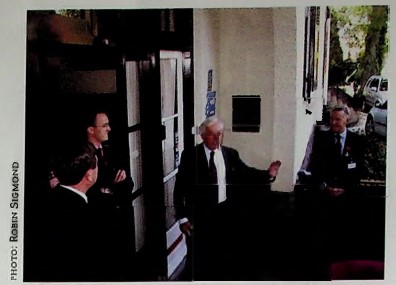
On 18 September 2005 a plaque was unveiled in com-memoration of the actions fought by men of the 7th (Galloway) Battalion The King’s Own Scottish Borderers between 19 and 22 September 1944 in and around the Dreyeroord Hotel at Oosterbeek. Centre in the photograph is the hotel owner Mr A. van der Straaten with the plaque in the background. For many years Mr Van der Straaten and his son Jan, the manager, have given their selfless co¬operation to the annual reunion of the 7th KOSB. Right, Henk Duinhoven.(Galloway) Battalion The King’s Own Scottish Borderers between 19 and 22 September 1944 in and around the Dreyeroord Hotel at Oosterbeek. Centre in the photograph is the hotel owner Mr A. van der Straaten with the plaque in the background. For many years Mr Van der Straaten and his son Jan, the manager, have given their selfless co operation to the annual reunion of the 7th KOSB. Right, Henk Duinhoven.
Plaque for Dreyeroord
As usual after the annual commemoration at the Airborne Cemetery in September this year, the vet-erans of the 7th (Galloway) Battalion the King’s Own Scottish Borderers (Airborne) again held their reunion. This reunion has been held for many years at the Hotel Dreyeroord in Graaf van Rechterenweg, Oosterbeek. The Van der Straaten family, long-time owners of the hotel, receive the veterans with open arms, the coffee is ready, and after the usual speech from Henk Duinhoven, soup and rolls are served. The ‘Borderers’ call the hotel the ‘White House’ for the simple reason that, for them in 1944, the name Dreyeroord was almost impossible to pronounce correctly… as is the case today.
This year, after a word of welcome, a fine plaque was unveiled next to the hotel door to commemo¬rate the fierce battle fought by the Borderers in and around the building between 19 and 22 September 1944. More than thirty of them died during the fight¬ing and were given temporary graves in the garden. The text was written by Major Michael Forman, commander of B Company during the battle. Sadly, Major Forman passed away earlier this year. The plaque, an initiative of Robert Sigmond, was made by Shuggie Hoskins from Scotland.
“The Royal Air Force at Arnhem Glider and re-supply missions in September 1944’
Much remains to be told about the Battle of Arnhem, among the latest offerings being ‘The Royal Air Force at Arnhem. Glider and re-supply missions in September 1944’, a book about the RAF’s part in the glider and re-supply flights to Arnhem. It is written in English by Luuk Buist, Philip Reinders and Geert Maassen, all three
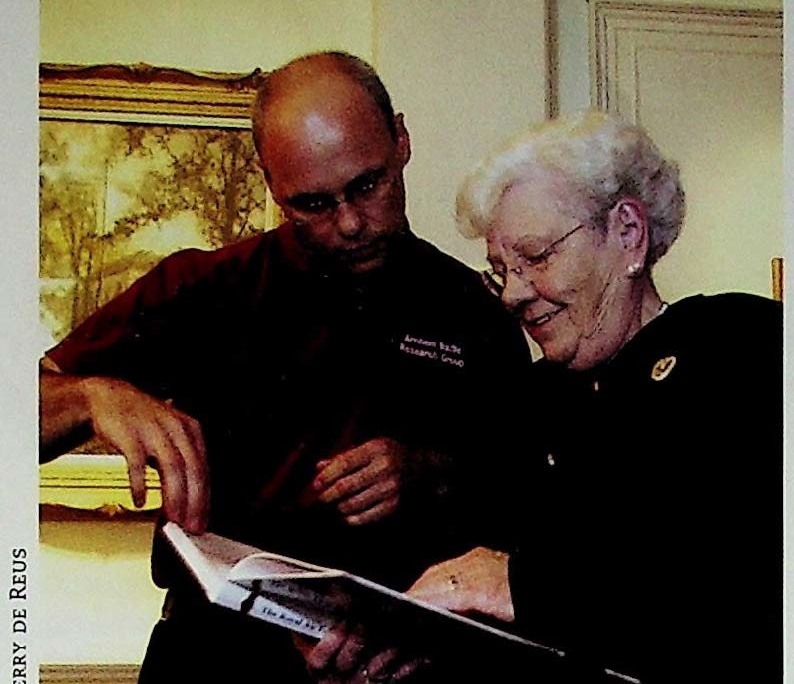
During the presentation of the new book ‘The Royal Air Force at Arnhem’ on 16 September 2005, one of the authors, Philip Reinders, hands the first copy to Mrs Anne Long from Canada. She is the sister of Warrant Officer Peter Tonner, who was a crew member of Dakota KG-418 (512 Sqn) which made an emergency landing at De Buunderkamp, west of Wolfheze, on 20 September 1944. On 17 October 1945, Peter died in a Canadian hospital of meningitis and tuberculosis, diseases which he contract ed while a POW.
‘Friends of the Airborne Museum’.
It was an enormous logistical problem to transport the 1st British Airborne Division and the 1st Polish Independent Parachute Brigade Group in three days, some 12,000 men, with their transport, artillery, communication equipment, and enough ammuni¬tion, food and medical supplies for the first few days. A total of 1,260 transport aircraft and 663 glid¬ers were needed to take the troops to Nijmegen (the 1st Airborne Corps HQ) and to Arnhem. Where pos¬sible they avoided German AAA positions, flying over liberated areas where they could. On the way they were escorted by several squadrons of fighter aircraft. The first aircraft to depart on 17 September carried the ‘Pathfinders’, whose job it was to mark the dropping and landing zones. The tugs and glid¬ers left next.
The personal accounts of crew members virtually take us on board during the flight to Arnhem. In the eight days of missions we experience the weather conditions, the flak, the injuries from ground fire, the return flight(s) of crippled aircraft or the crash of an aeroplane. Clear tables indicate the airfield, the first pilot, the aircraft with number, and the depar¬ture and return times of each squadron involved. All unsuccessful glider and re-supply flights and crash¬es are given with the description of the aircraft con-cerned. No sorties were flown on 22 September and the last missions took place on 25 September. A brief day-by-day sketch is painted of the situation on the ground, the weather, if the northern or southern route was taken and the number of fight¬er squadrons employed, providing an excellent pic¬ture of the situation on the ground and in the air. After describing the glider and re-supply flights the book tells us something of the German AAA, the flak, at Arnhem. Here too personal stories by German flak gunners are included, which give a vivid account of their destructive work. In the next chapter Philip Reinders describes six crash sites as they appear 58 years after the battle. In the chapter ‘The aircraft and their Squadrons , all sixteen squadrons, with airfield, commander, crest, number and total sorties flown, are described. A table shows which ground unit used which type of navigation aid to guide the incoming aircraft. ‘Containers, pan¬niers and parachutes’ describes these and the roller track used for ejecting the panniers from the air¬craft. A list of supplies dropped completes this chapter. A further list of aircraft, their emergency landings and crashes per aircraft, the names of the crew members and their fate, and a ‘Roll of Honour’ introduce the last chapter, which mentions the dec¬orations awarded for Arnhem.
The authors have done admirably, and carried out a tremendous amount of research. The personal sto¬ries bring you close to events, making for a gripping book that allows you to experience the huge achievements of the RAF aircrews. The book reads easily, is 200 pages long, well illustrated, and pub¬lished by the Society of Friends of the Airborne Museum. This book is more ‘accessible’ compared with the two books by Arie-Jan Hees, “nigs and Gliders to Arnhem’ and ‘Green On!’, which also touch on the same subject. However, the two books mentioned are more in the form of reference works which deal with the subject in much greater detail. ‘The Royal Air Force at Arnhem. Glider and re-sup- ply missions in September 1944’ costs € 37.50. (Okko Luursema)
‘All Men are Brothers’
That is the title of a recently published ‘Roll of Honour’ dedicated to the 93 parachutists of the 1st Polish Independent Parachute Brigade Group and the three Polish pilots who died at Arnhem. It was compiled by Andries Hoekstra from Arnhem, who with this book wishes to contribute to the rehabili-tation of the brigade and its commander, Major General Stanislaw Sosabowski.
For the capture of the bridge at Arnhem in September 1944, the British 1st Airborne Division was reinforced by the Polish Parachute Brigade. The 1,500-man strong brigade was scheduled to land south of the Rhine bridge on 19 September 1944, but because of bad weather conditions only part of the brigade was dropped two days later. Even then it was at Driel, not at the Rhine bridge. The material flown m earlier by glider was nearly all lost during the landing at ‘Johannahoeve’. The Poles had virtually no means of crossing the Rhine, but some 350 men did manage to reach the north bank of the
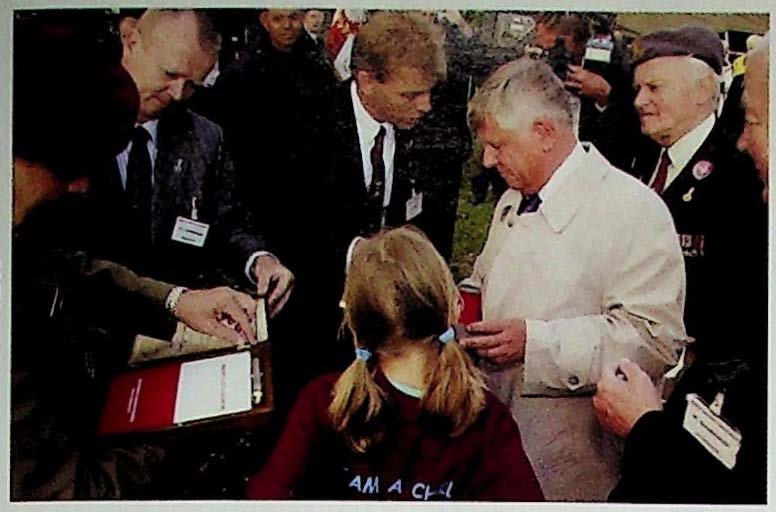
De Westerbouwing (Oosterbeek), 16 September 2005. The compiler of the book ‘All Men are Brothers’, Andries Hoekstra (centre), presents the first copies to veterans of the 1st Polish Independent Parachute Brigade Group and to the Polish Ambassador. He was assisted by Frans Ammerlaan (left).
river. The rest of the brigade fought on at Driel, and kept the way open for the 2,000 British troops to reach their own lines following the withdrawal across the Rhine during the night of 25/26 September 1944. Later, the British army command¬ers largely blamed the Poles, quite unjustifiably, for the failure of the Battle of Arnhem.
The book is in Polish and English. It begins with a chapter on the history of the brigade and its com-mander General Sosabowski, followed by the ‘Roll of Honour’. The left hand pages give the personal details of each soldier who died and a portrait pho¬tograph. The right-hand pages carry a large colour photo of the relevant grave. The title of the book is taken from a dramatic moment from the Battle of Arnhem in which a Polish soldier died in the arms of a Medical Corps soldier. His last words were ‘Why all this misery? All men are brothers’.
The book was presented on Friday afternoon 16 September 2005 in an open area in the woods close to De Westerbouwing restaurant in Oosterbeek, a spot which gives a panoramic view of the former battlefield at Driel. The first copy was presented to the grandson of General Sosabowski, Michael Sosabowski, in the presence of several Polish veter¬ans and the Polish Ambassador to the Netherlands. ‘All Men are Brothers’ can be ordered via the www.marketgarden.com website and from various bookshops in the Arnhem area. It costs € 22,50.
Banner of the Polish parachutists presented to the Airborne Museum
At the end ofWW II most of the Polish parachutists who fought at Arnhem did not return to Poland, preferring to remain in Britain. On 25 February 1948 they set up the ‘Polish Airborne Forces Association’ in England with Walny Zjazd as its first president. Only when the Cold War ended, could parachutists who lived in Poland become members. On 14 September 1959 the association was presented with a banner in Driel. The money for this was col¬lected by the inhabitants of the places where the Poles had fought.
Over the years the number of members had fallen to such an extent that this year the association took the decision to disband and have their banner housed in the Airborne Museum ‘Hartenstein’. The banner was handed over on the steps of the muse¬um on 18 September. The ceremony was conduct¬ed by the then president Major (Retd) T.J. Herman and the General Secretary Madame Lieutenant (Retd) I. Hrynkiewicz, in the presence of the Polish veterans who had attended the 61st commemora¬tion that weekend. Wybo Boersma accepted the banner on behalf of the Airborne Museum Foundation. It will be on permanent display in the museum as a reminder of the efforts of the 1st Polish Independent Parachute Brigade Group in September 1944.
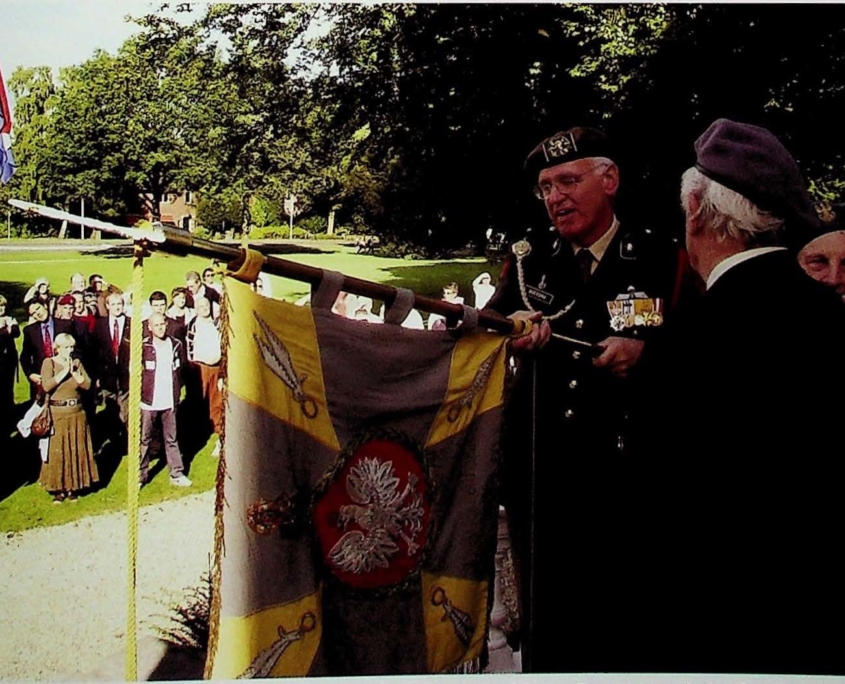
18 September 2005. Wybo Boersma accepts the banner of the Polish Airborne Forces Association from the hands of Major TJ Herman (retd) on the steps of the Airborne Museum’The ba7ne7wiUbeon display in the museum to commemorate the part played by the 1st Polish Independent Parachute Brigade Group at the Battle of Arnhem.
Captain Killick’s Luger pistol
One of the well-known series of photos of a British patrol in Weerdjesstraat at Arnhem taken by pho-tographer Sem Presser on 18 September 1944, shows Captain John Killick carrying what is obviously a German Luger pistol. Niall Cherry wrote to Sir John Killick in 2003, and one of the questions he asked was ‘How did you come by that German weapon?’ Sir John replied: ‘I certainly didn’t have a Luger before I went to Arnhem. While on my way to Arnhem after landing on 17 September I came across a deserted German HQ in De Tafelberg hotel in Oosterbeek. Only later did I learn that it was the headquarters of German Army Group B! It seems that Model and his men had left in some haste because their lunch was still on the table. After a quick look round I felt a bit isolated, so I went on my way on the German motorcycle I had found some¬where and rejoined the 1st Parachute Brigade HQ.
I then received permission to return to the German HQ with one of my men for a more detailed look. If we had had the time for a really thorough search the place would certainly have provided a gold¬mine of information. We ‘confiscated’ a few Lugers, and I replaced my .38 Smith and Wesson with one of them. I put the Smith and Wesson on the motor¬cycle, which eventually I had to abandon just before reaching the Rhine bridge in Arnhem. I never saw it again’.
Ministories on CD-Rom
Requests for old Ministories are still regularly received, but unfortunately some have been unavailable for a very long time. In an endeavour to meet these requests our former chairman Chris van Roekel has scanned all the Ministories up to and including number 88, and put them on a CD-Rom. Dutch and English editions will be available at a cost of € 20.
Ede in Wapenrok’ reprinted
The book ‘Ede in Wapenrok’ (Ede in Uniform) was published in May 2004. It was written by society member Evert van de Weerd in conjunction with Gerjan Crebolder. This study deals with two cen¬turies of military history in the municipality of Ede, and includes wide coverage of the Battle of Arnhem. The publication was mentioned in Newsletter No. 94, and was quickly sold out.
However, a modified and expanded version has recently been published. A DVD entitled ‘De Bevrijding van deVeluwe 1945′ (The liberation of the Veluwe 1945) which shows pictures of the airborne landings in 1944, the liberation of Arnhem, Ede-De Klomp, Lunteren, Barneveld, Nunspeet, Harderwijk and Apeldoorn, and the German capitulation in Wageningen is included as well. There are also ama-teur pictures of the liberation parade in 1985. This 40-minute long DVD can be bought separately for € 5,50. Order from bookshops or direct via www.bduboeken.nl.
Military Library Research Service Ltd
We would like to draw your attention to the excep-tional publishing house mentioned in the above title. The house has been in existence for 18 months. The Military Library Research Service (MLRS) specialises in the publication of original source material about various military subjects, including the Second World War. These cover reports originally issued in small numbers, and in most cases reside in official British, Canadian and American archives. MLRS has reached agreement with such bodies as the National Archives in London (the former Public Record Office) and the Canadian National Archives, to photocopy certain documents in their collections, to duplicate and publish them. One of MLRS’s directors is military historian David Westwood, who served with the Parachute Regiment from 1962 until 1966. Because of this he has a great interest in the history of air¬borne forces.
A major project with which they are involved at present is the publication of a series of ‘Cabinet Papers’. These are official reports, in this case about military operations, which were compiled shortly after the war by staff officers from the war diaries of the units involved. These reports were intended for use as the basis for the yet to be published ‘Official Histories’. The interesting point about these Cabinet Papers is that they concern documents which record events as factually as possible. They there¬fore give as complete a picture as possible, as yet ‘untainted’ by political opinions.
One of the recent issues in this series is ‘Operation MARKET GARDEN and the Battle of Arnhem’ (CAB 44/252 & CAB 44/254). This report is sub-divided into three chapters entitled ‘HQ 21 Army Group’, ‘21 Army Group Operations 29 Aug. to 30 Sep. 44, excluding operation “MARKET GARDEN” and Second Army operations 27 to 30 Sep. 44’ and ‘Operation “MARKET GARDEN” and Second Army operations 27 to 30 Sep. 44’. All possible aspects of the planning and execution of the different opera¬tions are described in detail.
Without going into too much detail about the con¬tents, one can rest assured that we have here an almost inexhaustible source of information. At the back of the book are reduced-size maps in colour and aerial photos on which all manner of information is marked. This 322-page report should have a place in the library of anyone seriously interested in operation ‘Market Garden’! The price is £ 49.
MLRS has a website, www.mlrsbooks.co.uk, which contains all the works so far published. New titles are added to the site each week. All publications can also be ordered from the website. It is a fine initia¬tive of a few enthusiastic people to make source material from archives accessible to everyone, and the (amateur) historian will undoubtedly find it of great use. Highly recommended!
(Robert Voskuil)
‘Airborne Battle Wheels’ booklet
This year the ‘Airborne Battle Wheels Oosterbeek’ (ABWO) foundation celebrated its tenth anniversary. To mark the occasion a jubilee booklet was pub¬lished in September which gives a more-or-less photographic overview of the ABWO’s re-enactment activities over recent years.
The ABWO members are mainly Dutch, British and Polish, who are equipped with original vehicles, uni-forms, various pieces of equipment and (disabled) weapons, all of the type used by the British airborne troops in 1944. Every year a large ‘army camp’ is erected for the period of the Battle of Arnhem com-memorations. This year it was built in the grounds of the J.P. Heije foundation in Oosterbeek. During the commemorations the ABWO organises various events, including the ‘Race to the Bridge’ and the reconstruction of a position of a troop of 75 mm Howitzers, and takes veterans for trips in old army vehicles.
Photographs of all these activities are contained in the booklet which, though intended principally for members, could also be of value to people interest¬ed in re-enactment. It gives an excellent impression of the atmosphere within the club and of the com-prehensive collection of vehicles and material they have at their disposal. The text in ‘Airborne Battle Wheels Oosterbeek, 10th anniversary’ is in Dutch and English, but the captions are in English only. It is a nicely produced book which was compiled by Ramon Berlauwt and published by R.N. Sigmond Publishing in Renkum. The booklet is available in the Airborne Museum and at the Oosterbeek book¬shops, price € 13,50.
Commemorative envelope 2005
On 17 September 2005 the Airborne Museum issued its annual commemorative envelope, the tenth in the series with ‘Monuments of the Battle of Arnhem’ as subject. The envelope shows the monu¬ment to the people of Gelderland to remember the support they gave the British and Polish soldiers of the 1st British Airborne Division in September 1944. The monument, which is near the Hartenstein, was unveiled in September 1994 by General Sir John Hackett as part of the 50th commemoration of the Battle of Arnhem. In 1944 General Hackett, then Brigadier, commanded the 4th Parachute Brigade.
The issue consists of 250 numbered copies, each of which being franked on 17 September 2005 at the Oosterbeek Post Office. Copy No. 1 was given to the Leader of the Pilgrimage 2005, Colonel John Waddy. The commemorative envelopes are for sale in the Airborne Museum, Oosterbeek, for € 3,50. The issue of this envelope ends the ‘Monuments of the Battle of Arnhem’ series.
A limited number of envelopes from previous years are still available in the museum to enable you to complete your set. See also website: www.airborne- museum.com.
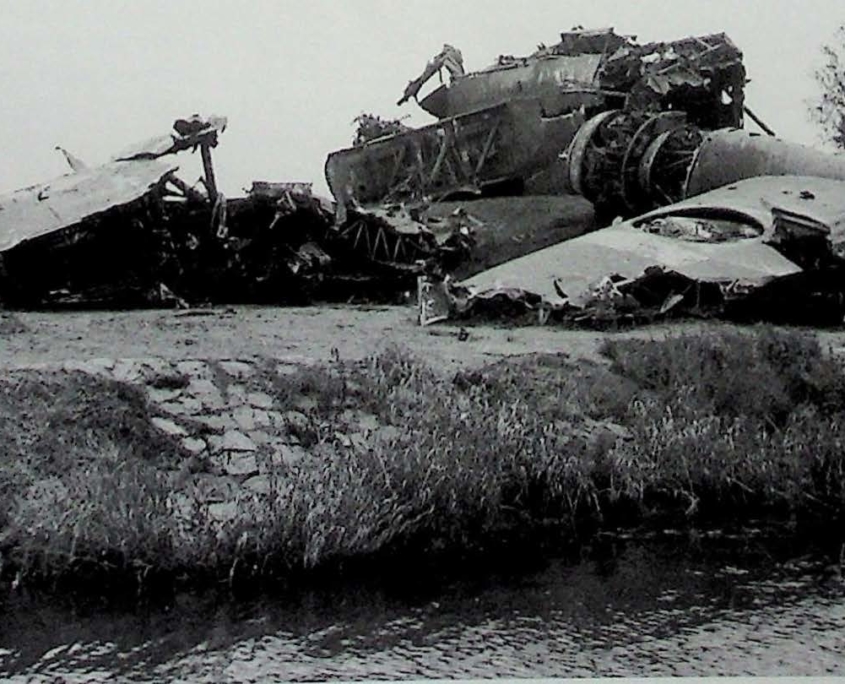
In June 1946 the wreckage of Stirling LJ-833 was recovered from the river Maas near Batenburg, and stacked on the river bank.
Batenburg saved from disaster!’
A raw, wet, cold wind blows across the south English countryside. It is still early in the morning of Thursday 21 September 1944, the 5th day of the the crash in Dieden near Batenburg, where it was serving as an access gate to some pig pastureland.
Battle of Arnhem, as the personnel of Fairford airfield in Gloucestershire, the home base of 190 and 620 Squadrons, Transport Command, RAF, go about their work. The initial preparations have been made to ready the transport aircraft scheduled to fly re¬supply missions today. They will be taking supplies to the men of the 1st British Airborne Division near the Hartenstein Hotel in Oosterbeek, about eight kilometres from Arnhem.
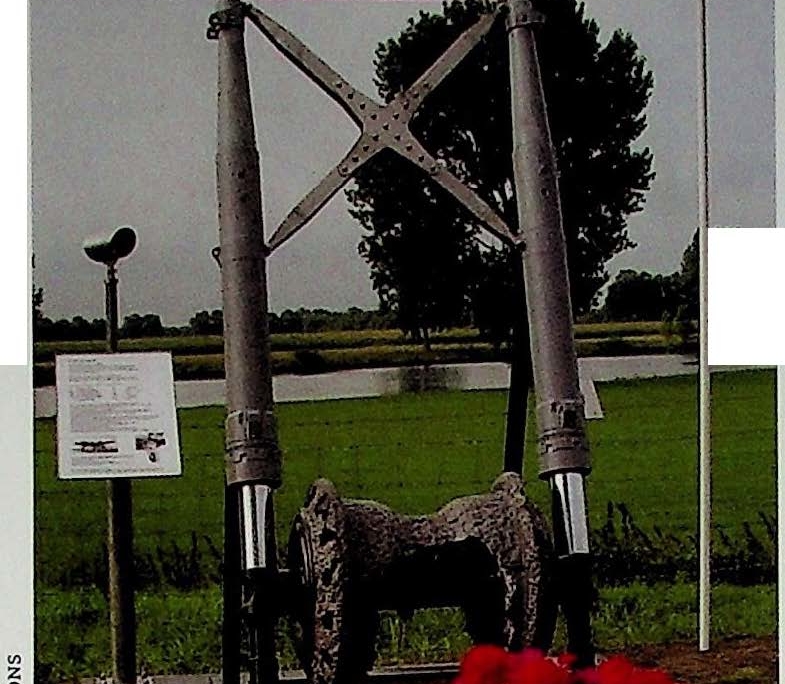
The monument on the dike in Batenburg commemorating the men urho lost their lives in Stirling LJ-833 when it was shot down there on 21 September 1944. The memo rial is part of the aircraft’s undercarriage. It was found sixty years after the crash in Dieden near Batenburg, where it was serving as an access gate to some pig pas tureland.
A total of 117 British transport aircraft from various airfields in England will be taking part in this day’s sorties, including 21 Short Stirling aircraft from Fairford. This will be no pleasure trip, as the RAF air-crews are well aware. They know that their col¬leagues have had a rough time on previous mis¬sions, suffering heavy losses in aircraft and men. The British ground troops at Oosterbeek have been involved in heavy fighting for days now, and have been driven into a corner by the Germans. There is a shortage of heavy weapons, ammunition, food and other necessities, and the RAF crews are very conscious of the fact that the ground troops depend on them for the delivery of their supplies.
Once the aircraft have been topped up with fuel and ammunition, the supplies to be dropped are loaded with great care. While the machines undergo a final check, headquarters staff brief the crews with the final details needed for a successful flight. The weather forecasts are anything but favourable. Clearer weather is expected in the afternoon so the mission is scheduled to begin around midday. Because of the large number of aircraft involved m the sortie it has been decided to fly in in four waves. Fifteen of the 21 Fairford machines go as the third wave, taking off between 12.10 and 12.20 British time one hour behind Dutch time.
One ’of the re-supply aircraft flying today is Short Stirling LJ-833 (190 Sqn) flown by Flight Lieutenant A Anderson and his crew. Around noon they receive permission to take off, and away they go. Flight Lieutenant Anderson heads for the agreed assembly point, and searches for the rest of the formation. The aircraft then fly in formation to the dropping zones near Oosterbeek. The flight goes smoothly with no interference from flak or enemy aircraft. However, as they fly over the Netherlands, the American fighters promised for their protection fail to materialise, much to everyone’s astonishment. Shortly afterwards they are attacked by German fighter aircraft, and as they begin their approach to the dropping zone, the formation flies into a net¬work of anti-aircraft fire. The aircraft are given a hammering, which hinders the supply drop, but once the supplies are gone the single thought in every crew member’s mind is to get away from this deadly spot as quickly as possible. The return flight to the safe south begins immediately.
Suddenly Flight Lieutenant Anderson’s aircraft is attacked on all sides by flak and fast-approaching German fighters. One of the Stirling’s engines receives a direct hit and stops, and then a wing bursts into flames. There is some panic on board, and the crew of LJ-833 have their work cut out keep¬ing the crippled machine in the air. They are unable to shake off the vicious, hostile German fighters. The fire in the wing is out of control: a hopeless sit¬uation. The aircraft is losing height fast, so the order to bail out is given, the order for the men to get out immediately by parachute. The Stirling is at 500 feet, and the men have yet to jump, and as the battered aeroplane approaches the river Waal two men bail out in a hurry. In the meantime the German fighters persist in their attacks, hoping to administer the coup-de-grace.
Flight Lieutenant Anderson decides to try a belly- landing with the barely-flyable, burning Stirling, and starts looking for a suitable spot to set it down. To his horror a small town appears from nowhere, dead ahead. The population of that town, Batenburg, fears the worst as they see the groaning, blazing machine approaching. A crash among the closely-packed houses would be a catastrophic dis¬aster, because there are many, many farms with thatched roofs. As if by a miracle Flight Lieutenant Anderson manages to guide his Stirling past the town. Almost immediately it hits the waters of the river Maas, breaks up on impact and sinks.
Three members of the crew are saved by people from Batenburg who have rushed to the scene. Sadly, the rescuers arrive too late for the other crew¬men: the river Maas is too cold and the currents are too treacherous. A few days later three bodies are washed up between Batenburg and Appeltern. The two men who bailed out do not survive, and one other RAF airman is listed as missing. In mid-June 1946 the wreck of LJ-833 is recovered from the Maas, and during the recovery the body of navigator Flying Officer Adamson is found.
Of the 21 aircraft that left Fairford for the re-supply mission on 21 September 1944, nine failed to return. Sixty years on, part of an aircraft is discovered by chance in Dieden, a Brabant village near Batenburg. The aircraft part is built into an access gate to a pig pasture. Historical research by J. Arts, amateur his-torian with the Local History Group Megen, Haren and Macharen, quickly concludes that it is part of the landing gear of Short Stirling LJ-833 from Batenburg. Together with ‘Het Batenburgs Erfgoed’ and the owner of the access gate J. Arts finally suc¬ceeds in finding a fitting ‘last home’ for the aircraft component. A monument! Yes, a fitting monument had to be raised in honour of the servicemen who died saving Batenburg from disaster. On 21 Sep¬tember 2004, sixty years after the tragic event, a monument was unveiled on the Ringdijk at Batenburg, close to the point where the crash hap¬pened.
Because it coincided with the 60th commemoration of the Battle of Arnhem, the unveiling of the monu¬ment did not receive the attention it deserved. Therefore, Short Stirling LJ-833 was remembered on Wednesday 21 September 2005. This time it was an exceptional commemoration. Besides representa¬tives from the British and Dutch air forces, the cer¬emony was given an extra-special tint with a fly¬past by an historic British aircraft. After the wreath¬laying, a Dakota from the ‘Battle of Britain Memorial Flight’ did a number of low fly-bys, a true tribute to the young, dead servicemen.
The servicemen from 190 Squadron who died were: Flight Lieutenant A. Anderson (RAF), Flying Officer A. Adamson (RAF), Flight Sergeant W. Tolley (RAF), Flight Sergeant A. Bellamy (RAF), Flight Sergeant G.F. Conry Candler (RAF) and Driver A. Abbott (Air Despatches RASC).
Sixty-one years ago they gave their young lives on Dutch soil for our so precious freedom.
(Jac. Arts, Groote Woordstraat 5, 5368 AH Haren, tel.
0412 462592, e-mail: s.arts@planet.nl)
Monument to the Resistance of Arnhem
Sixty years after the end of the Second World War the town of Amhem now has a monument to the memory of the organised civilian resistance to the German occupier in the period 1940-1945. The memorial is affixed to the rear elevation of the Musis Sacrum building, and was unveiled on 17 September 2005 by the lady burgomaster of Arnhem, Mrs Pauline Krikke. The initiative for the raising of the monument came from Arnhem veter¬an Bob Peatling who, after the Battle of Arnhem, was kept out of German hands by the Resistance during the winter of 1944/1945. The monument consists of a huge photograph of a wild, cloudy sky, which is printed on 128 one square metre aluminium plates using the silk-screen printing technique. The inscription reads ‘De meeste mensen zwijgen, een enkeling stelt een daad’ (Most people remain silent. A single one takes action).
See also the article by Bob Peatling below.
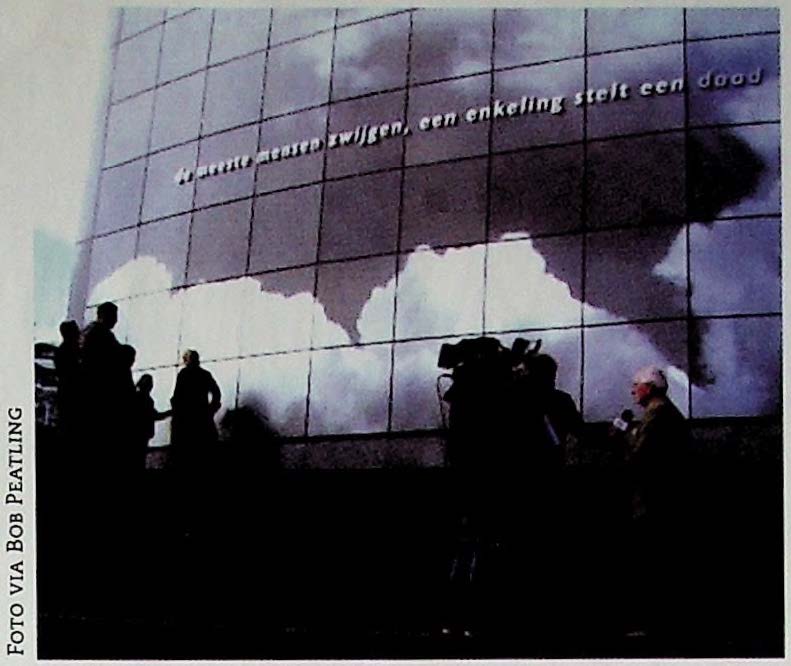
17 September 2005. Arnhem veteran Bob Pentling is interviewed by a television crew after the unveiling of the monument to the Arnhem Resistance on the rear wall of the Musis Sacrum building.
The Resistance helped 186 men to cross back over the Rhine!
Little is known in the United Kingdom about the Resistance movement in the Netherlands during World War 2. The organisation of the escape opera-tion Pegasus 1 in October 1944 took a month, and resulted in the successful escape across the Rhine of 138 officers and men who were left behind after the Battle of Arnhem. The story of this escape is bril-liantly told by Major Digby Tatham Warter, com-mander of A Company, 2nd Parachute Battalion. It is entitled ‘Dutch Courage and Pegasus’, and is includ¬ed in its entirety in my book ‘Without Tradition 2 Para 1941-45’. In it all honour is given to the Resistance movement for the organisation of the plan and for the reconnoitring of the route during the nightly curfew.
Forty-eight other people were also fleeing the occu-pied area. They were brought together by Resistance people who guided them on their 50 km long jour-ney to Sliedrecht, where they were able to reach the liberated south via ‘De Biesbosch’, a marshy area criss-crossed by waterways. These two to four hour journeys by canoe were carried out in February and March 1945 on freezing cold nights. Some Resistance members made such journeys every night. They were the real heroes. I have never come across this story in English, but everyone who took part is mentioned, with the date and time at which they reached the southern bank, in a 1998 Dutch publication, ‘Gevangen op de Veluwe’ (Imprisoned on the Veluwe), by W. Noordman.
My own interest centres mainly on the Arnhem Resistance group because I spent from 31 October till 31 December 1944 with them in the heart of the town. After writing about them in my book ‘No Surrender at Arnhem’, published in 2004,1 contact¬ed the editor-in-chief of ‘De Gelderlander’ newspa¬per with the question: ‘Why, in a town with so many monuments, is there no memorial recognising the people who took so many risks for us under such dangerous circumstances?’ My ideas were taken seriously, and were made known to its readers by De Gelderlander, whereupon proposals were made and money collected. On 17 September this year the monument was unveiled on the south wall of the Musis Sacrum in Arnhem.
In most places the Resistance was well organised. For me they found good hideout addresses with farmers, who could not do enough to help me. At the last address I had the additional luck that there were eight children, who called me uncle Karel or uncle Kees!
I saw how these people worked and cared. They forged identity papers for those who needed them. For me they made an ‘Ausweis’ with photo that did its job when I wanted to leave Arnhem and was stopped at a checkpoint. They found hideout addresses and organised food where and when nec¬essary. When a Jewish family was discovered by the Germans, their small daughter was taken into a lov¬ing Dutch family. Every day broadcasts by the BBC were listened to. The news was typed up, duplicated and brought around to the people in the country¬side. Everything was done to frustrate the enemy. On Queen Wilhelmina’s birthday in 1943 a man climbed a tall factory chimney and painted ‘Long Live the Queen’ on it from top to bottom. The fol¬lowing year a banner with the same text was fixed to the Rhine bridge in Arnhem. Without doubt these sorts of actions greatly irritated the occupier, but the message was clear.
The Underground Resistance paid a high price. After I left Arnhem at the end of December 1944, five men from my surroundings were picked up by the ‘Sicherheitsdienst’. Only two of them returned alive from the camp in May 1945.
Next time you are in Arnhem make sure you visit the monument to the Resistance!
(Bob Peatling)
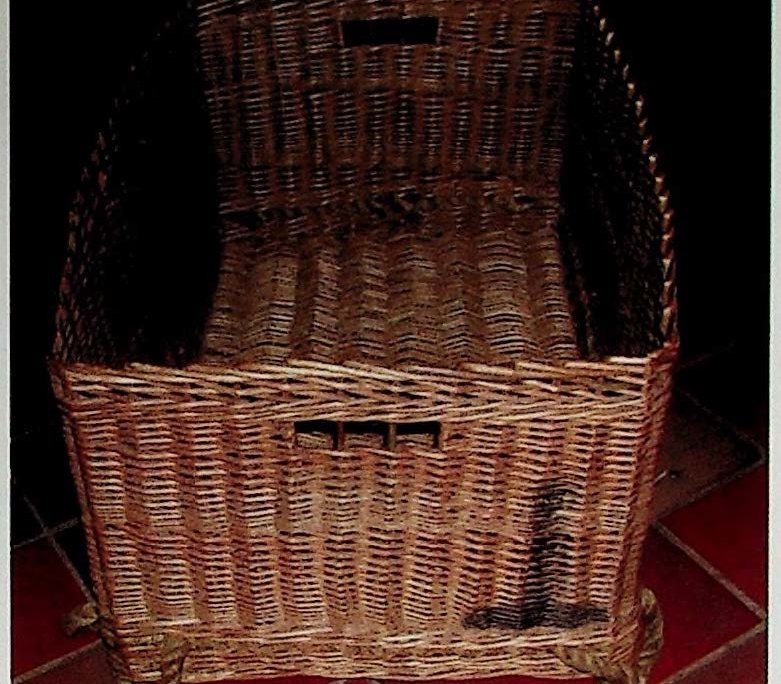
The supply pannier bearing the letter T which was used for the dropping of ammunition during the Battle of Arnhem, and doubled as a baby’s crib after the war.
Gift of supply pannier
The Airborne Museum was recently been given a British supply pannier. It is the so-called outer pan-nier which was slid over an inner basket. This par-ticular pannier came down near Jacobaweg 9 in Oosterbeek on 21 September 1944. A letter T was marked on the outside. According to an eyewitness its parachute was blue, and it contained two crates of 6-pounder anti-tank ammunition.
After the war the pannier was used for years as a cradle. Alas, there are no surviving photographs of this period. If by chance you should have a photo of a similar supply pannier being used as a crib or trav¬el trunk, would you please contact the Airborne Museum. We would like to have a copy of such a photo for the museum collection.
(Roland Boekhorst, maintenance staff)
Rectification
On page 3 of Ministory 87 (Newsletter no. 99) the name Miep Mekkink-Verdoorn is given in a caption. Mrs E. Staf from Leidschendam let us know via the author of the Ministory that the name should be Miep Verdoorn-Van de Brink.
COLOPHON
The Newsletter is a publication of the Society of Friends of the Airborne Museum Oosterbeek (SFAM) and appears four times per year. The objective is to promote the Airborne Museum, the SFAM and the history of the Battle of Arnhem.
Editor: drs. R.P.G.A. Voskuil
Editorship address: Utrechtseweg 232, 6862 AZ Oosterbeek; e-mail: wam@planet.nl Coordination sending, archiving and distribution of back numbers: Chris van Roekel, Oosterbeek.
English translation: Cathrien and Peter Clark.
Design: Hildebrand DTP, Wageningen.
Print: Drukkerij Verweij Wageningen BV.
SFAM representative in the U.K.: Niall Cherry, 3 Church Road, Warton, Lancs PR4 1BD, tel. 01772 632764; e-mail: niall.cherry@baesystems.com Airborne Museum ‘Hartenstein’ address:
Utrechtseweg 232, 6862 AZ Oosterbeek, telephone 00 31 26 3337710;
e-mail: info@airbornemuseum.com
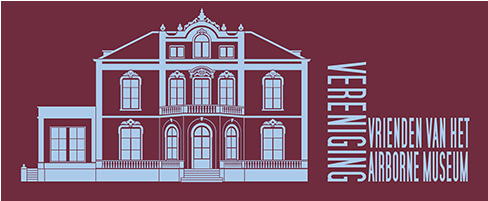
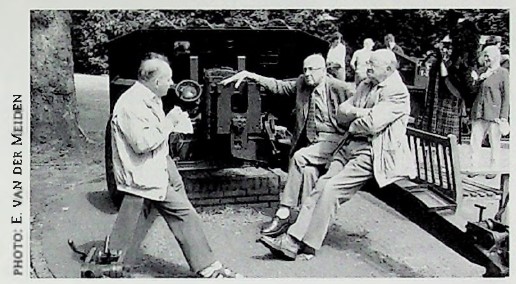
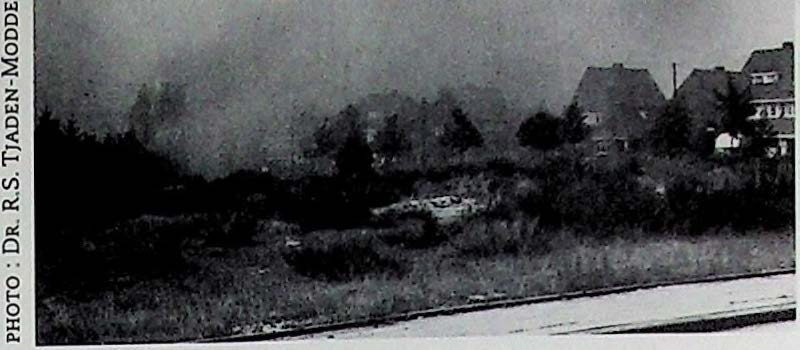
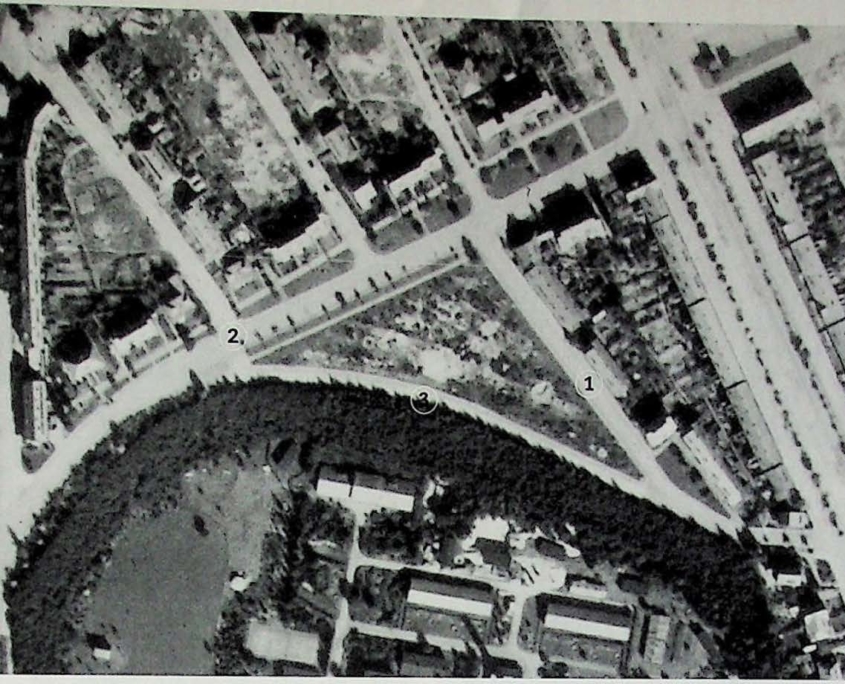
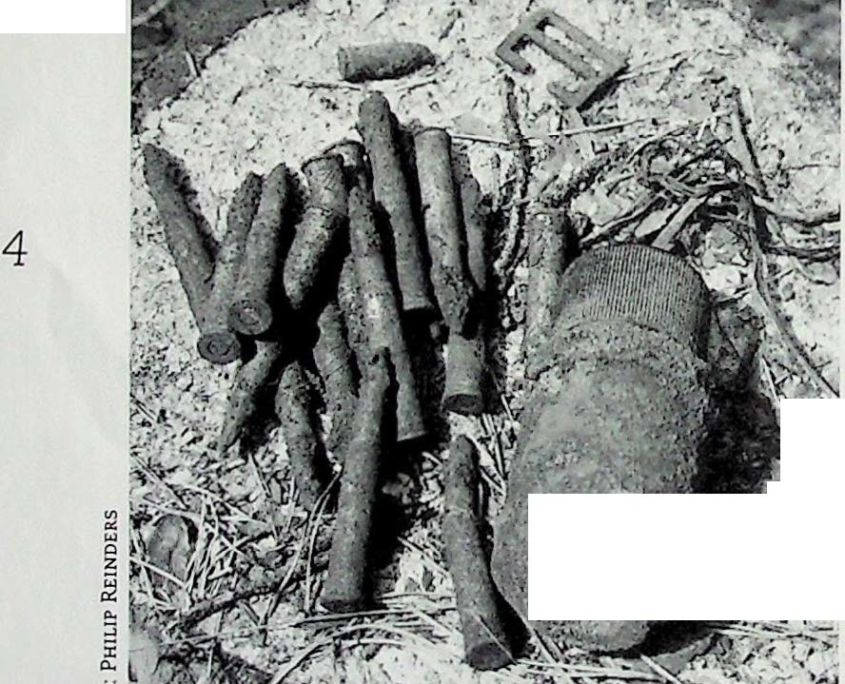
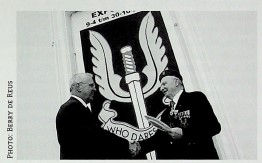
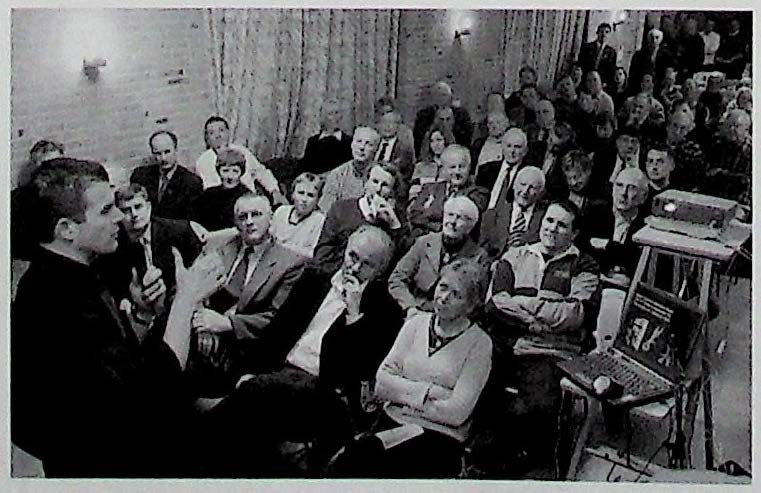
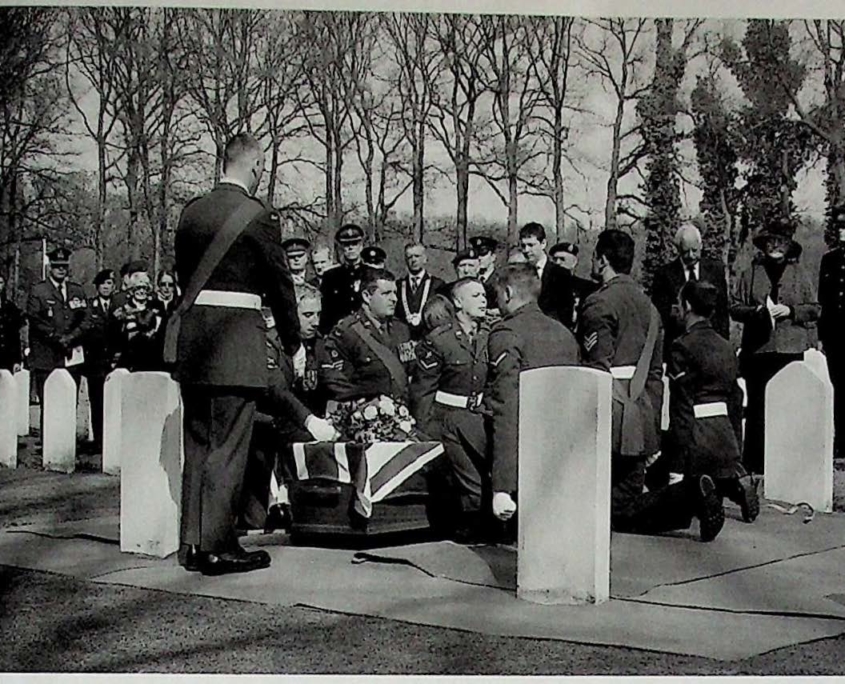
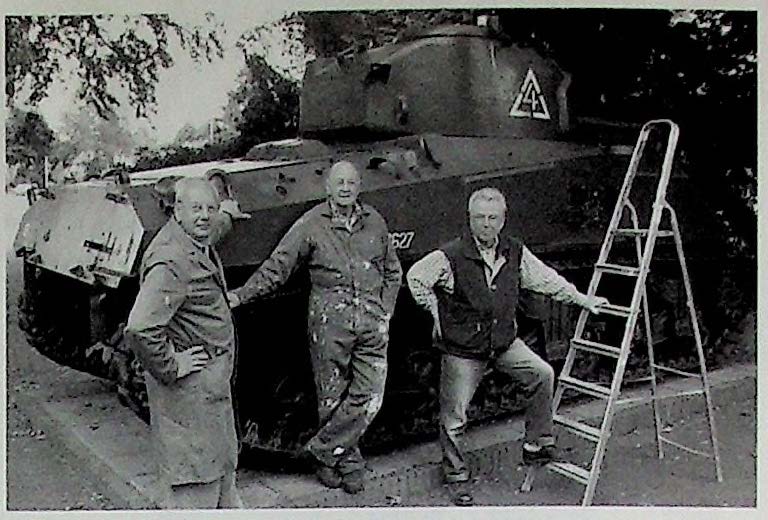
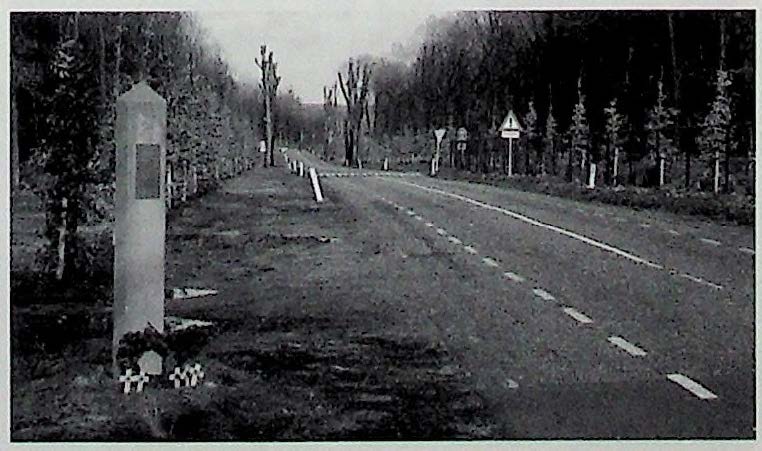
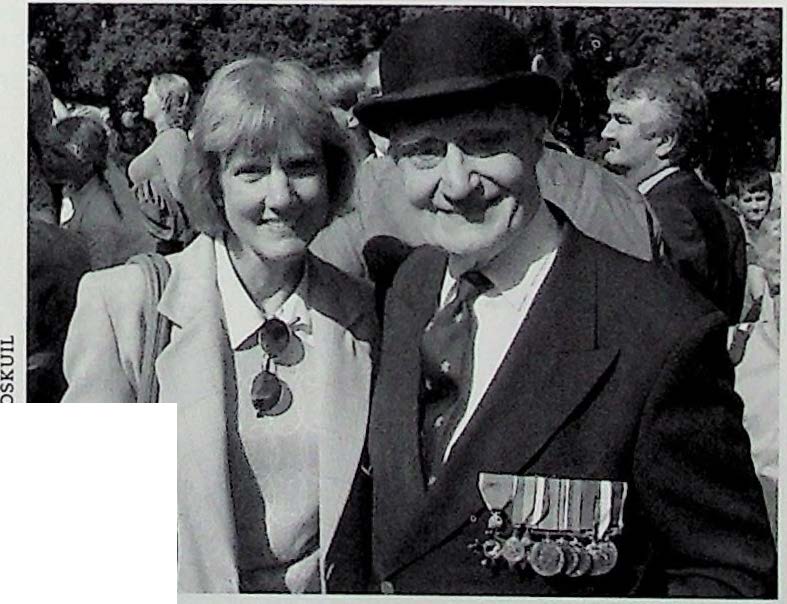
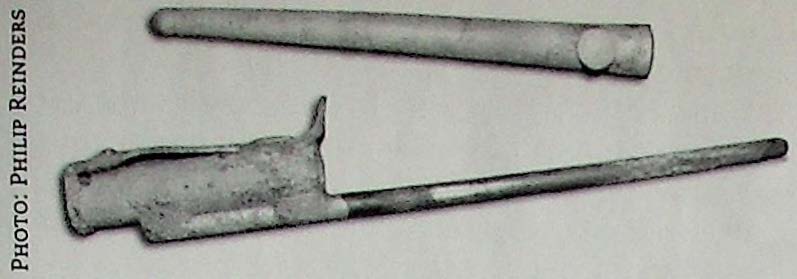
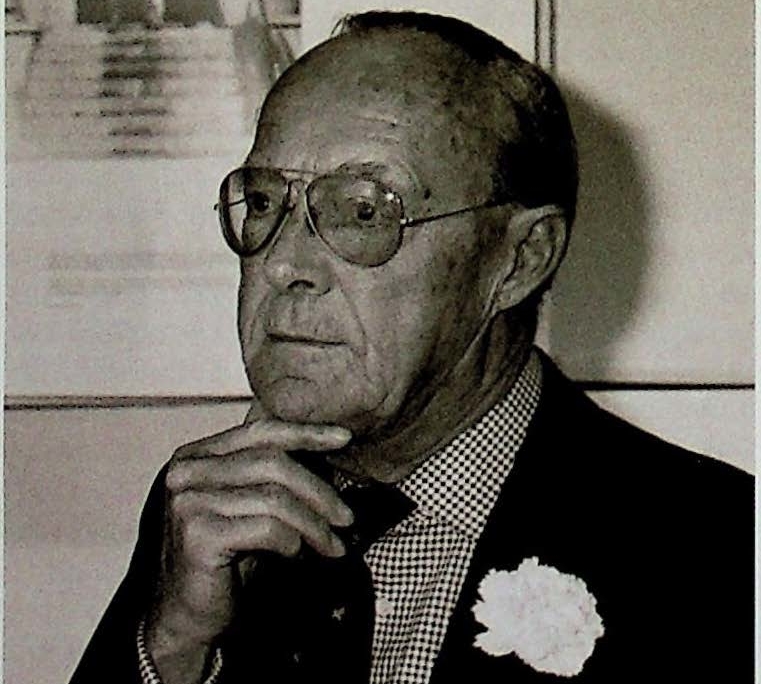
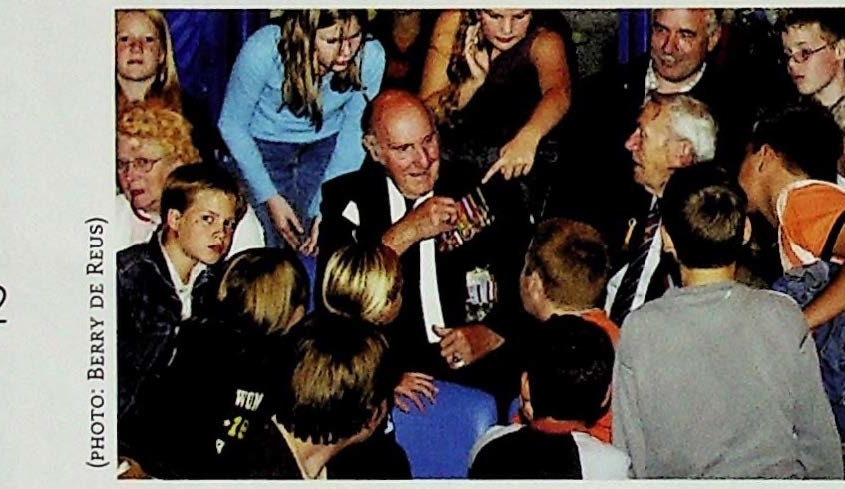
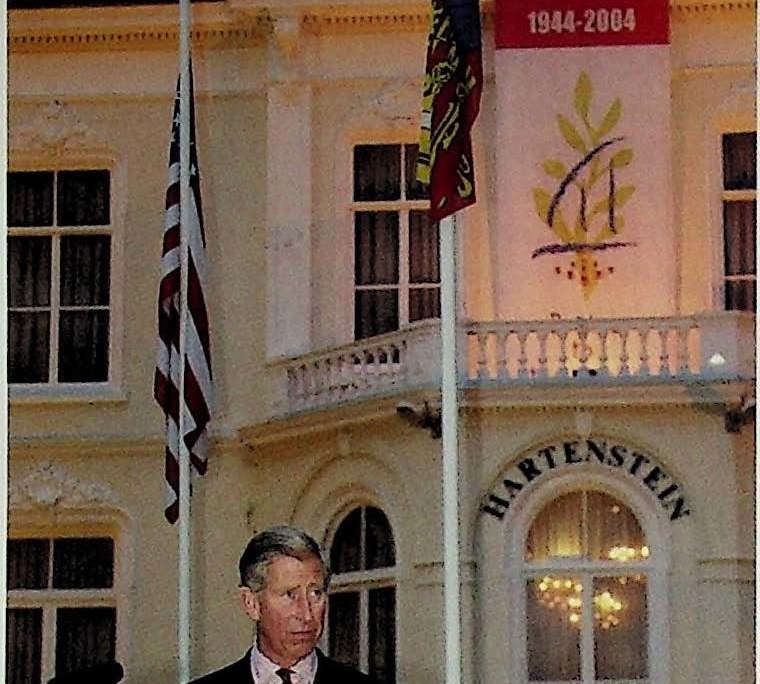
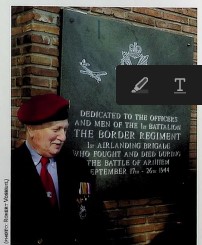
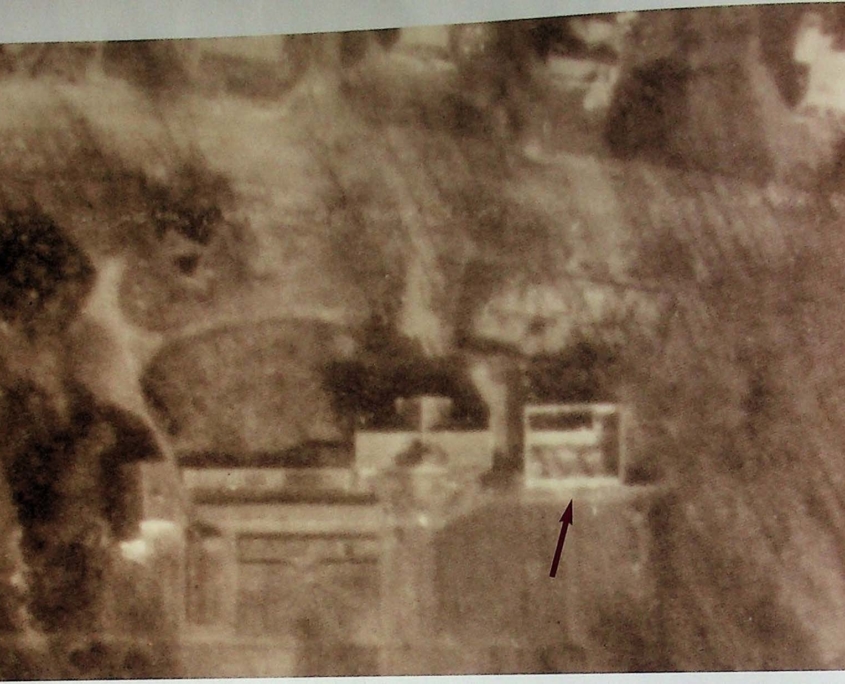
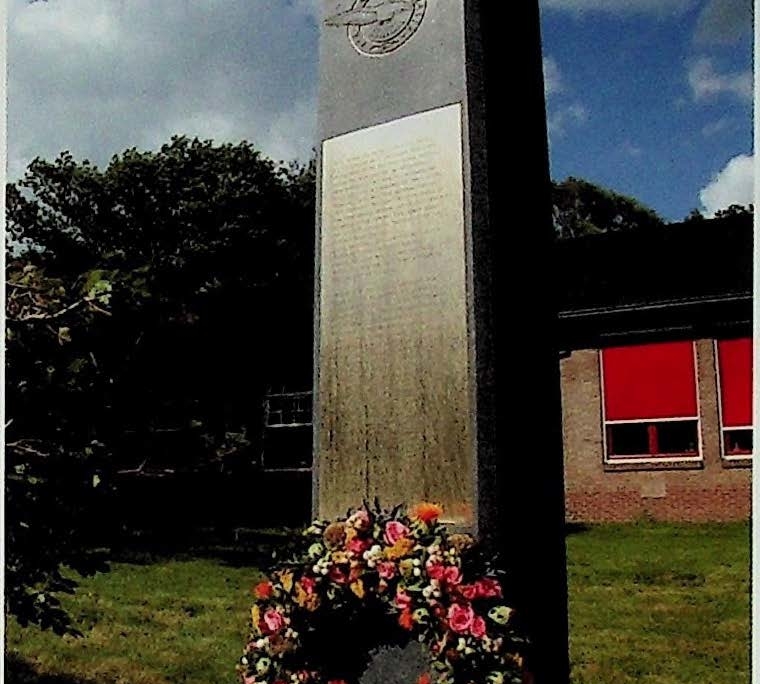
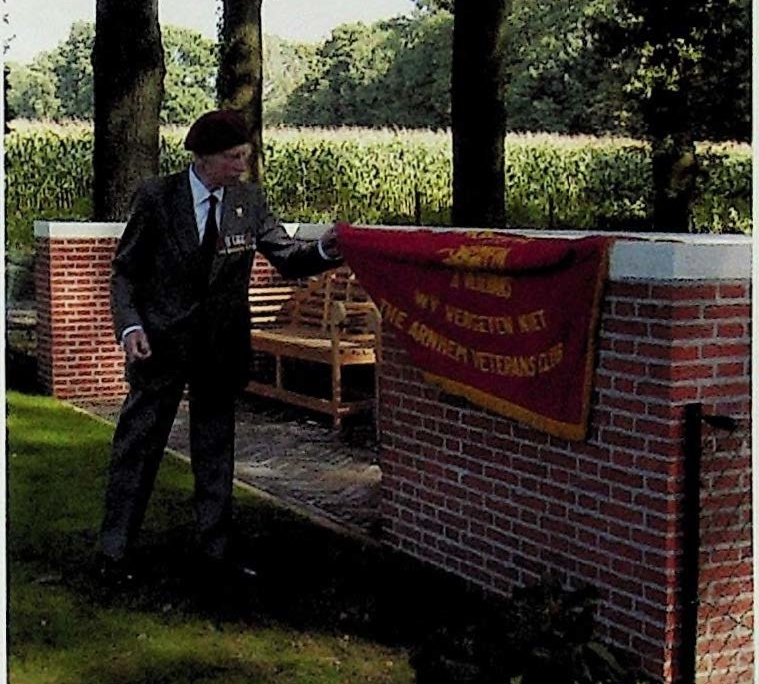
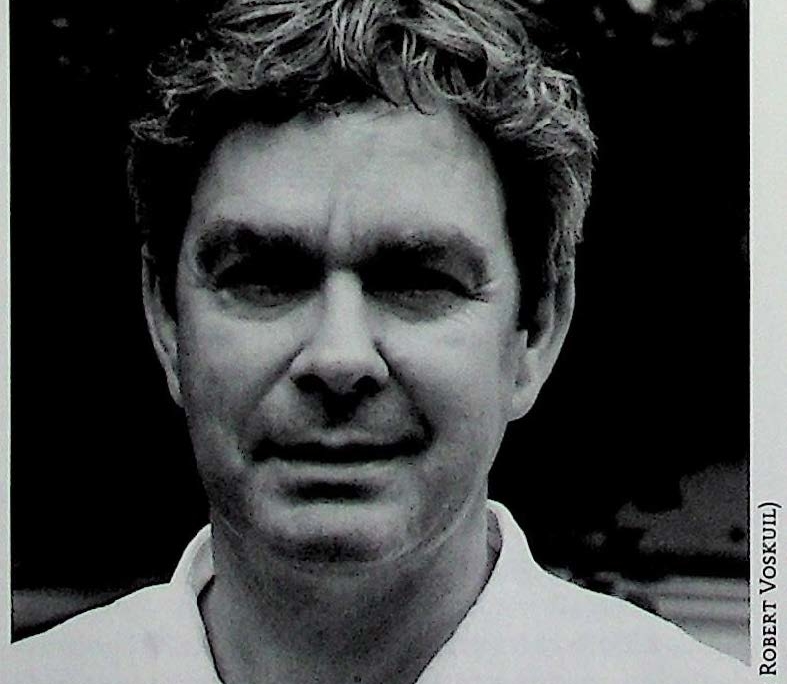
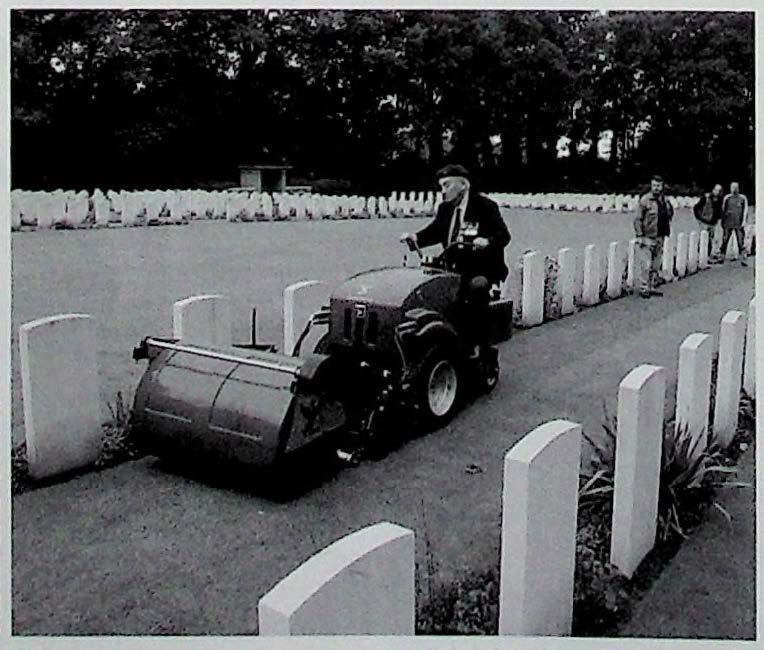
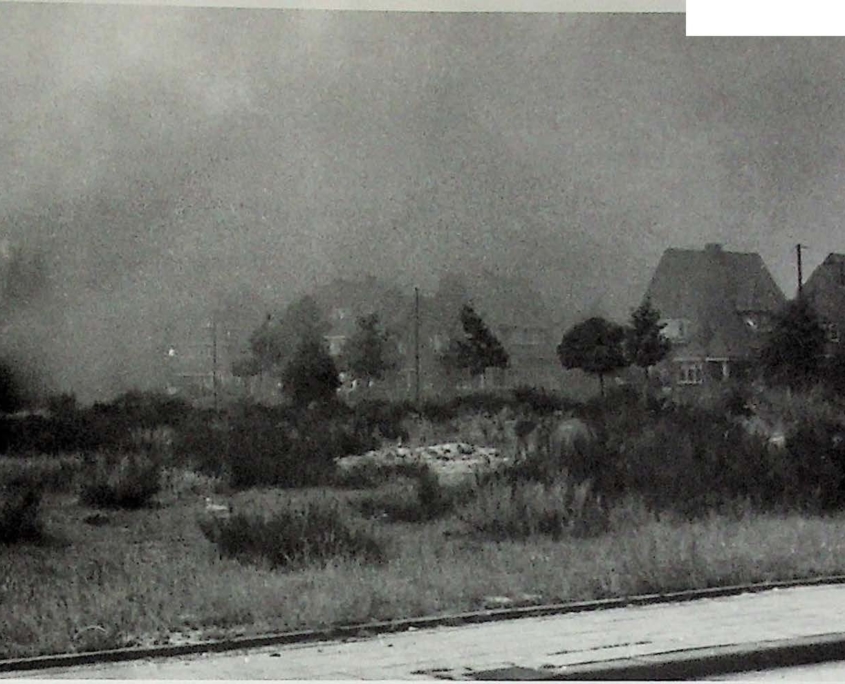

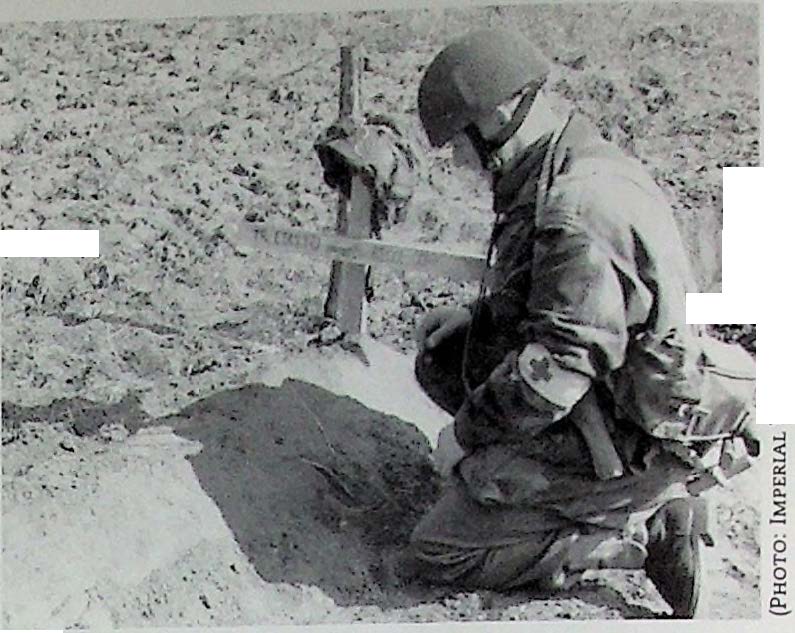
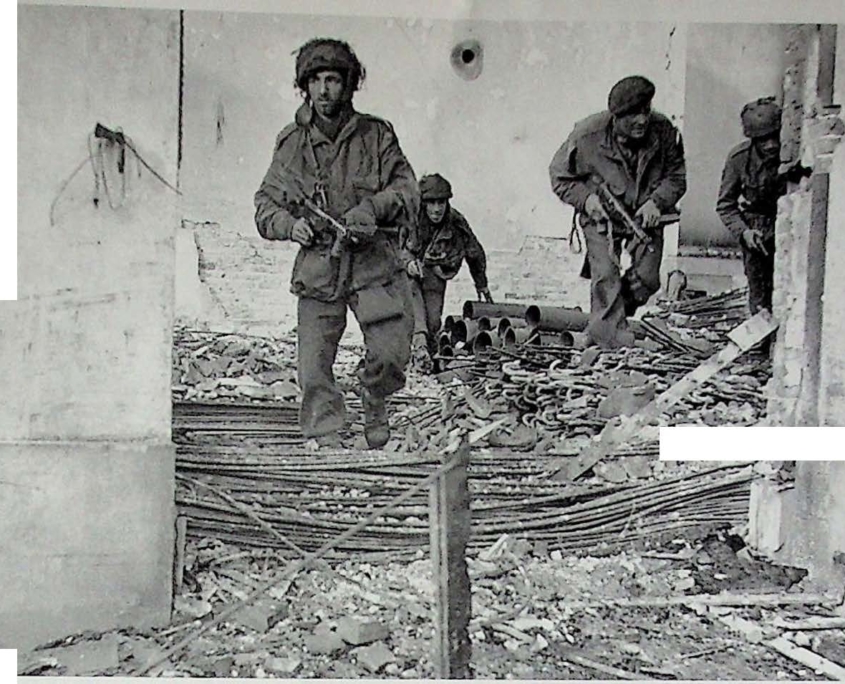
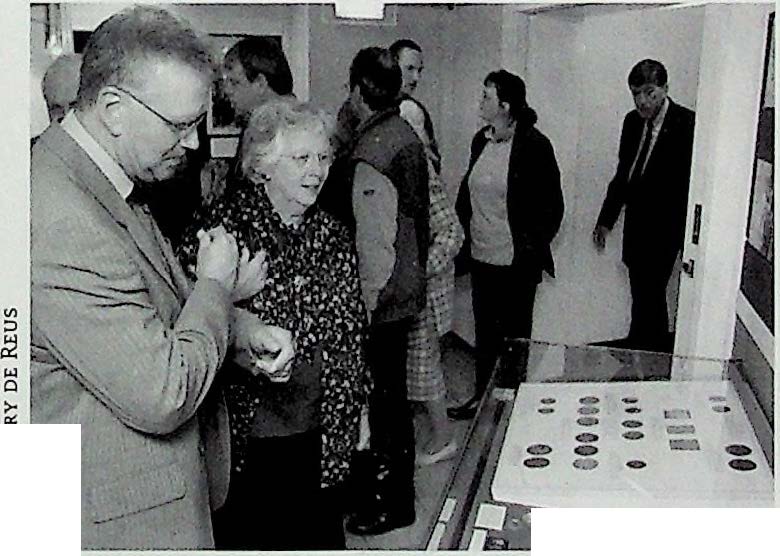
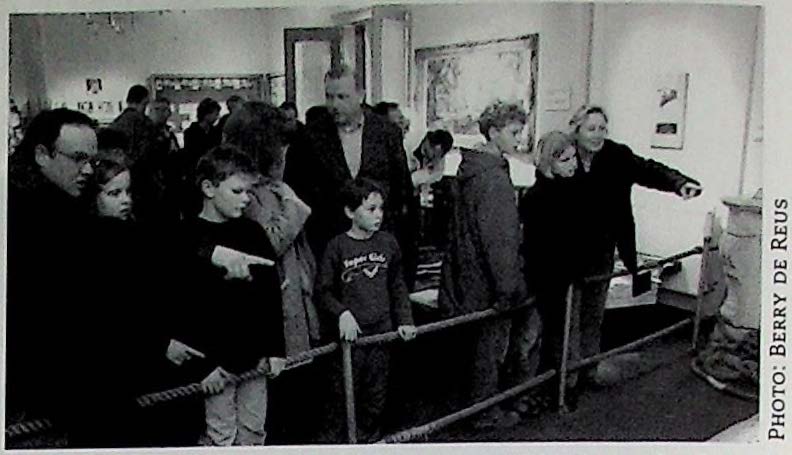
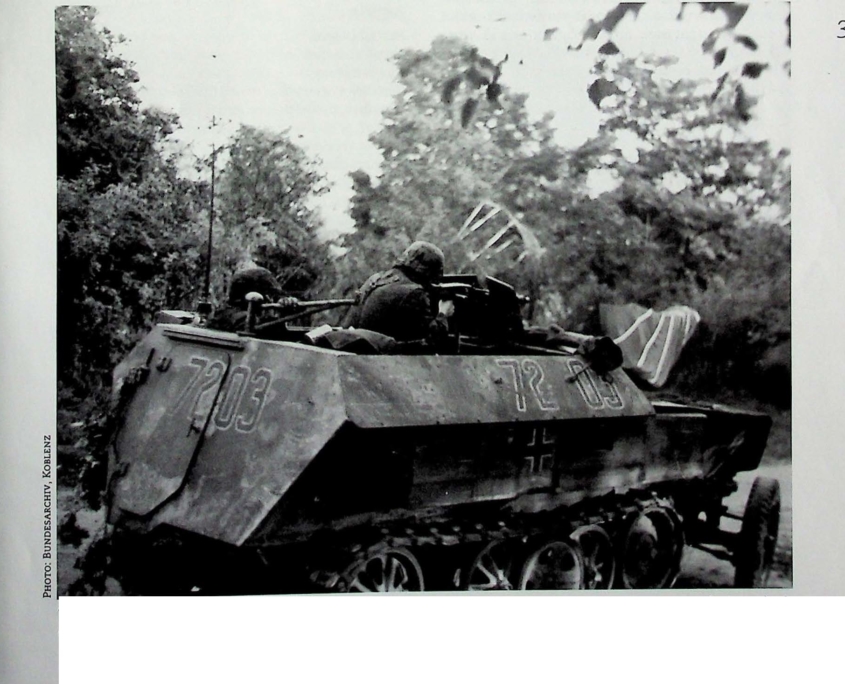
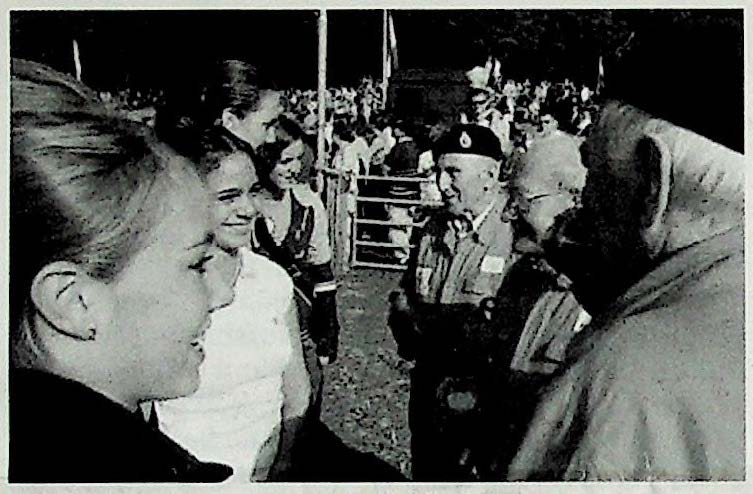 20 September 2003. After their parachute jump on Ginkel Heath, British veterans chat with Dutch schoolchildren.
20 September 2003. After their parachute jump on Ginkel Heath, British veterans chat with Dutch schoolchildren.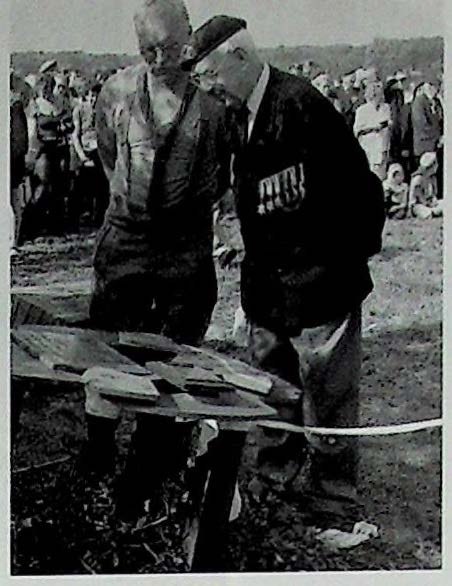 21 September 2003. Following its unveiling, Rob van der Zon – who fashioned the monument – and veteran Mr. M. J. Potter inspect the new Operation Berlin monument on the flood plains of the Rhine at Oosterbeek. (photo: Axe Jon Versluijs)
21 September 2003. Following its unveiling, Rob van der Zon – who fashioned the monument – and veteran Mr. M. J. Potter inspect the new Operation Berlin monument on the flood plains of the Rhine at Oosterbeek. (photo: Axe Jon Versluijs)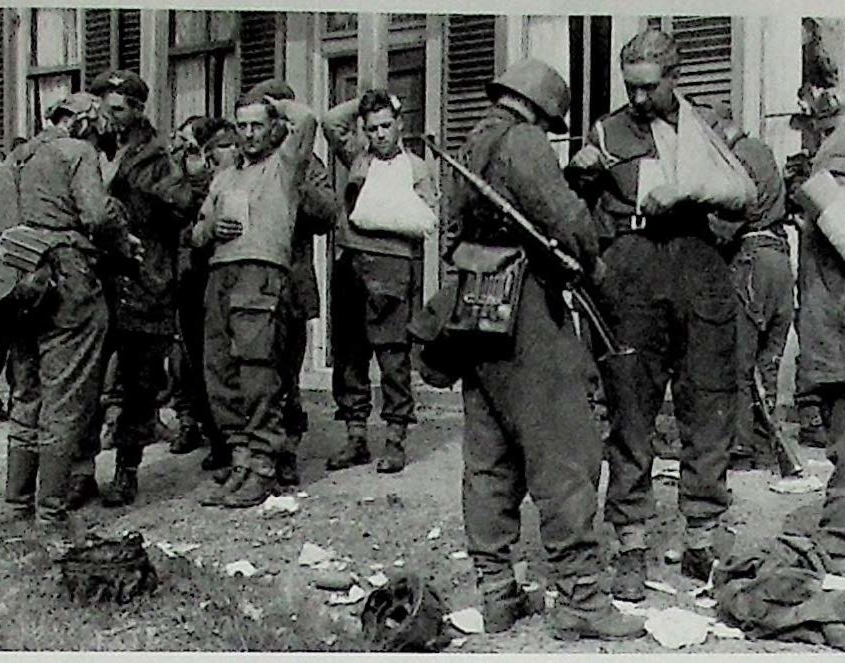 C Troop 1st AT Bty, commanded by Lieutenant Ted Shaw (later, for many years our SFAM representative 20 September 2944. German soldiers search British wounded in front of the house of the Berghege family in Utrechtseweg, opposite Annastraat, in Oosterbeek. Right, with an arm in a sling, Eric Milner.
C Troop 1st AT Bty, commanded by Lieutenant Ted Shaw (later, for many years our SFAM representative 20 September 2944. German soldiers search British wounded in front of the house of the Berghege family in Utrechtseweg, opposite Annastraat, in Oosterbeek. Right, with an arm in a sling, Eric Milner.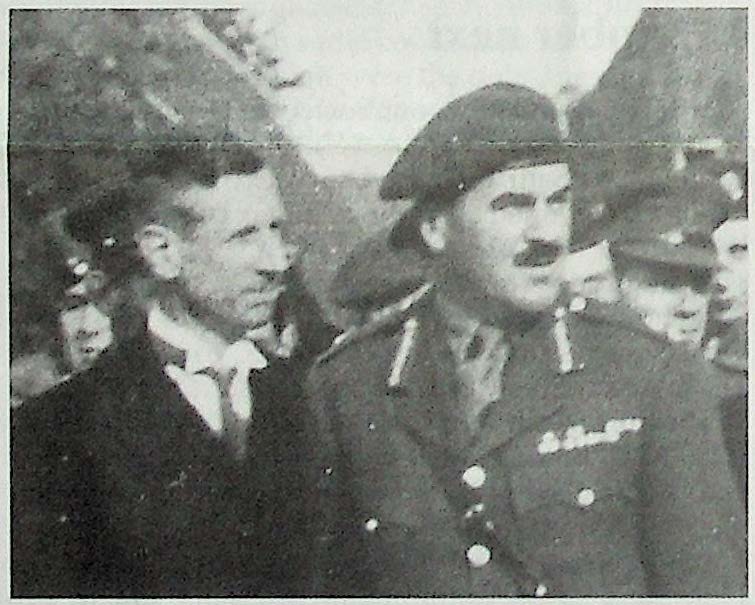 Burgomaster Jan ter Horst and Major General Robert ‘Roy’ Urquhart during the first Airborne Commemoration on 25 September 1945.
Burgomaster Jan ter Horst and Major General Robert ‘Roy’ Urquhart during the first Airborne Commemoration on 25 September 1945.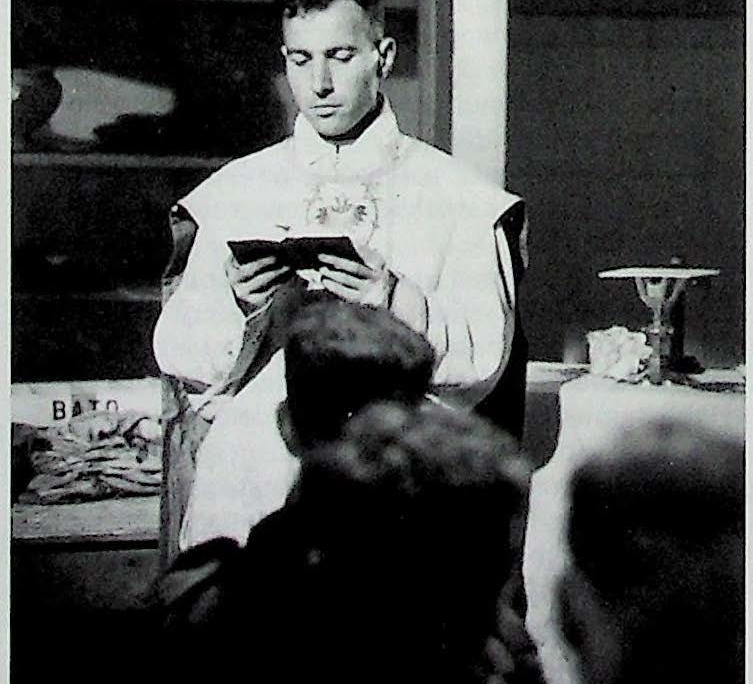 August/September 1945. Father Dijker during filming of ‘Theirs is the Glory’ in Hotel De Tafelberg.
August/September 1945. Father Dijker during filming of ‘Theirs is the Glory’ in Hotel De Tafelberg.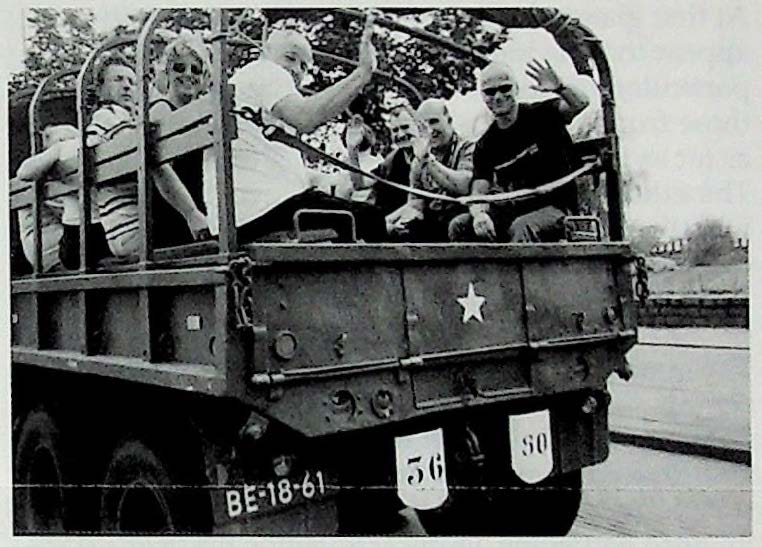 Sunday 22 June 2003. Participants in the UK Weekend being driven around in authentic World War II vehicles, (photo: Eugene Wijnhoud)
Sunday 22 June 2003. Participants in the UK Weekend being driven around in authentic World War II vehicles, (photo: Eugene Wijnhoud)